
Do it once, do it properly. What a fantastic ethos to live by. Especially if your work involves laser eye surgery, or building an engine to keep it Speedhunters-relevant.
Here in England, our post-lockdown TV is a mix of badly-streamed cooking shows and 30-minute home renovations. The premise for the latter is simple: a house gets bought for cheap, the bare minimum is spent to make it habitable, followed by the fixer-upper looking surprised when told it’s worth more money.

On a recent episode, Andy – a retired consultant from Newbury – buys one with a leaking roof. Against the builder’s advice, he has it patched up for maximum speed and efficiency. This works great until it starts raining two days later. Cue needing to buy the new roof after all.
Andy looked a bit silly on TV, but you can’t blame him for trying. In fact, swap out ‘leaking two-bed in Cambridge’ with ‘temperamental R34 GT-R’ and our experiences – along with approaches on fixing ‘em – aren’t too dissimilar. Although Andy’s headache is now making him money on the rental market.

So, if you’ve been trying to keep up with Project Thirty Four, the best advice I can give you is to follow Dino’s one instead. ‘Cus I’m not entirely sure what’s happening most of the time either; although I’m on a first-name basis with the local transporter at least.
Speedhunters is yet to introduce a Netflix-style ‘Skip Recap’ button, so I’ll keep it as brief as possible. First, the GT-R blew a headgasket. Once repaired, it cracked the engine block after a turbo water hose failed on the Autobahn at 130mph. Block replaced, it lasted 2000-miles before snapping a valve during a local track day.


The comments section seemed quite divided as to whether it was my fault – the idiotic driver – or just bad luck. I put it somewhere in between the two. Had I not been on track using all the revs, it likely wouldn’t have failed. But if all I did was store it in one of those weird car condom things – using it for inspirational quotes on the ‘gram – I may as well castrate myself and buy a Nissan Qashqai. Which actually sounds more enjoyable than not using an interesting car in case it breaks.

It’s easy to come across quite flippant in these updates, shrugging off engine failures like a kerbed wheel. But believe me, the annoyance is very real. Just ask Ben and Ryan who have the entire monologue documented across 14,000 iMessages. Putting it into a Speedhunters story doesn’t fix the problem, but it does mean I get to share the experience with likeminded lunatics as a kind of odd self-help group. Think alcoholics anonymous, but with turbo noises.

Ron at RK Tuning is my go-to man for Skyline work, and with the new engine built it dawned on me that I hadn’t given him a headache for at least a month. Mainly because he’d found time to update the RK Tuning Facebook page which usually occurs after every lunar eclipse. But for once it was Ron instigating the pain.
“What do you want to do with this turbocharger?” he asked me over the phone. “I think it should go back on the car,” I replied, proud of the comedy gold I’d just delivered. “It’s seen better days mate. There’s too much play in the shaft – what do you want to do with it?”

Skyline ownership in a nutshell, that.
There’s a GIF of Zack Galifianakis from The Hangover card counting which I regularly use in WhatsApp, simply because it’s a good representation of how my brain reacts to simple solutions. Sending the turbo core away would be quick and time efficient, but that’s the sort of thing Andy from Newbury would do. What about if we changed the entire turbo setup altogether?

I think Mrs. Kiddell had been chatting to Ron about long-haul holidays, because he seemed quite into the idea of the extra work. Oh, and during the inevitable long pause on the phone I decided to promise Ron I’d sort all the bits out for ease. But a Ron Kiddell “entirely up to you mate” is as good as gospel for me.
Not that it’s a particularly difficult job; single turbo RB parts are more common now than even the twin-turbo upgrades. From a packaging point of view, ditching the twins frees up a whole load of space meaning better heat management and the option for one giant turbo instead. I’d also argue it looks infinitely cooler, and the sound of an RB with a big single fitted is hard to beat.

With twin turbos the RB26 retains a more ‘traditional’ straight-six howl, which I’m also aware might be the most obvious thing I’ve ever typed. But listen to a 550bhp RB26 on twin 2530s vs. a 550bhp RB26 on a single T04Z and the two couldn’t sound more different. The big single sounds harder, angrier and – when on boost – is a complete savage.

Project Thirty Four didn’t need an entire conversion, though. Fresh from Japan it came with a full HKS T04Z fitted, this setup dyno’d at 680bhp on 1.6bar (23.5psi) of boost. So, with the turbo removed, it seemed like the perfect opportunity to go even bigger for more power. Not that it needed anymore, but Skyline GT-Rs are the world’s worst sleepers. People expect a 1,000 horsepower thanks to sites like Speedhunters.

We’ll cover turbo choice in a later update, because for this instalment I wanted to focus on the manifold instead – just in case the title seemed misleading. Everyone knows you can throw a turbo kit together relatively cheaply if you’re prepared to use our friend (and foe), eBay. When I first started mucking around with cars in the early 2000s, turbo kits were still seen as fairly mythical things with limited options available. eBay – and the certain types of less-than-ideal parts from the east – has completely changed how we approach tuning, but that’s not necessarily a bad thing.

For a start, not all the product is actually that bad. It doesn’t always have the longevity or finesse you’d expect from high-performance bits, but that’s also reflected in the price. What it has done is emphasise the use of proper hand-made parts for a specific application. The kind you’ll pay four or five times as much for, but it’ll last for life.

One company pushing this attitude in the UK is Walton Motorsport, a name I’ve been familiar with for years through the world of drifting. I’m guilty for assuming that a lot of drift cars (and builds in the UK) tend to favour those less-than-ideal eBay parts, but looking at the level Walton Motorsport operates within that stereotype couldn’t be further from the truth. Hell, if an RB-equipped car can withstand being battered while drifting it shouldn’t have any issues with a bit of track action.

Company founder, Mike Walton, has always been a fabricator with his background firmly cemented in the world of motorsport. In fact, prior to Walton Motorsport, Mike was responsible for building manifolds and exhausts for Le Mans racers, classic rally cars and even championship-winning F1 teams. That industry is unforgiving to say the least; if a failed exhaust costs someone a race win or championship, it’s a long day in the office after.
I’d originally planned to cover this manifold within a larger project update, but in case you hadn’t realised I do tend to ramble on a bit and, more importantly, the process turned out to be even more fascinating than I’d expected.

We’re all fairly conditioned in expecting things we order to arrive immediately – the Amazon Prime effect. In reality, the amount of work that goes into hand-made items is massively under-appreciated, and I’d put these manifolds fairly high up on that list.

That gave me the simple idea of watching one come to life. Not just any manifold, but surprise surprise, one destined for my own GT-R. And not just the last bit of welding either, but right from the raw materials through to the big reveal at the end. If I’ve gauged the Speedhunters audience correctly, I’m pretty sure you’ll be keen to see the process too.
I don’t shy away from the fact I’m mechanically inept, but I do massively enjoy learning and understanding how certain processes work. Obviously, I’ve abused my position as a Speedhunter to gain access to Walton Motorsport’s fabrication process, so maybe don’t turn up and ask if you can watch one being made. Just stick with me over the next thousand words or so.

Right, manifolds. The primary job of a manifold is to channel exhaust gases away from the cylinder head and – in the case of a turbo car – past the turbo exhaust wheel while spinning it as quickly as possible. That’s the easy bit; it’s the strength, durability and flow which gets a bit trickier.
Where do you start when building an RB manifold? Before getting any materials out, the first point is to work out what kind of performance is going to be expected from the engine. In the case of my GT-R, I’m aiming for 800+ horsepower which was one of the first things i shared with Andy and Mike @ Walton Motorsport. Both were on hand to answer the barrage of questions I had in mind, and I’m 99% sure Mike would’ve built the manifold in half the time had i not been there prodding for information.

“The RB is a strong six-cylinder engine, and if you’re going single turbo, we’ve found that most customers will be aiming for around 600 to 800bhp,” Sales Manager Andy Dove explains. “This means you’ll need to fit a decent-sized turbo, positioned in a way that allows good clearance to the exhaust and boost pipes. Then there’s bonnet clearance and – in the case of RBs – the cam covers which stick out a fair way on these engines.”
I’ve seen this on a lot of drag-spec Skylines which run their turbos massively forward due to the proximity of the strut tower, or in some cases protruding out of the bonnet. Absolutely fine when you live your life a quarter mile at a time, less so if you live your life 30 miles from work.


“Next, we need to consider tube lengths and research what works best for that engine,” Mike then adds. “The RB engines like to have similar-length tubes, whereas JZ motors react better to unequal lengths. Not just any old lengths, but we keep those a trade secret.”

“There’s also wastegate placement. It’s a balance between venting unwanted gasses and preventing too much turbulence and heat within the collector. Only once we have all of that information can we start the actual fabrication side.”

Depending on the car and engine, this initial construction process takes anywhere from a few days (Nissan SR20 manifold) to several weeks (BMW N54 manifold). Fundamentally, the process requires bolting, measuring, cutting and welding countless times until they reach a point where it can be tested. So which physical component comes first?

“The collector is the first part we build, but this isn’t an off-the-shelf item. We need to know what flange the turbo is going to use and what wastegate size the customer wants,” Andy explains. The collector, as the name suggests, is the bit at the end of the manifold where every branch merges together before entering the turbocharger.
In the case of my GT-R manifold, I opted for a v-band fitting rather than a T4 or twin-scroll setup. Why? I love the ease of fitting/removal a v-band allows, and history has taught me the engine will likely be out again at some point. But as I was using a mix and match of turbo components, it also meant the turbo could be rotated slightly (if need be) before constructing the down-pipe.

“When we know thee fittings, then we select the collector legs to use – the bits of pipe that merge into the collector,” Mike demonstrates. “We usually hand cut these in-house, but recently we’ve chosen to have them pre-cut externally albeit to our specification. Same quality, but it gives us more time to focus on the rest of the construction.”

Mike continues, “Our collector design works to be as universal as possible, however they can vary. The RB collector has a different orientation to the JZ one due to it being fitted on the opposite side of the engine. But most of the time, our ‘standard’ range works. That being said, we have 23 six-cylinder variations currently on system.”

“With the manifold taking shape, there’s one last job to do on the collector side which we’re particularly proud of,” Mike adds. “We weld our collectors internally and externally before porting the inside to a smooth point. Not only does this increase the strength, it also eliminates the risk of metal fragments breaking off and making their way through the turbo.”
“Although it takes more time, for T3 and T4 fitment manifolds we keep the port in the flange the correct shape of the turbo inlet rather than the easier option of an oval. By keeping this the same, it further promotes the best possible flow for increased power.”

Watching Mike weld this part of the collector is like watching the most extreme version of Operation ever played. Space is limited to say the least. One hand is carefully controlling the torch, the other applying the precise amount of material. Then there’s his foot, tapping away to control the amperage along the way. I’m not sure if Mike’s a keen drummer, but his rhythm is fully on point.

Once the collector is assembled to the customer spec, Walton then turn their attention to the head flange and stubs, which is otherwise known as the chunky bit that holds the manifold onto the side of the engine.

Every head flange is designed in-house and cut from 10mm, 304-grade stainless steel. Rather than use traditional laser cutting, Walton favour a high-pressure water jet instead having found that it not only increases accuracy, but also leaves a smoother edge.

“We use 304-grade stainless steel to prevent corrosion, but it also gives the best performance vs. price,” Andy explains. “That doesn’t mean it’s the best choice for overall performance where budget is less of a concern. Take RX cars; we use a super alloy called Inconel 625 as this remains stronger at higher temperatures than stainless steel. As a result, we can make it with a thinner wall to reduce weight, but also we’ve seen the dividing piece on a stainless T4 twin-scroll flange melt away in this application.”

“Another consideration when using stainless is the head flanges. Because they’re welded, they do have a tendency to shrink. That’s why we take this into consideration with our design so that it not only fits well but aligns with the ports correctly.”
“The typical short cut here is to use dramatically oversized mounting holes to account for the shrinkage. The problem there is, during mounting, they’ll move around and not align with the exhaust ports correctly.”

Right now, we’ve got the part of the manifold which bolts to the engine and the part which bolts to the turbo. You’d assume the bit that joins ‘em comes next, and you’d be absolutely right. The primary pipes are those tubes that go between the head flange and the turbo flange. They carry the exhaust gas away from the engine and dictate the flow which in turn dictates the performance.

“Common practice is to weld the primary tube to the face of the manifold as with virtually all of our competitors,” comments Mike. “Our method is to use a stub as mentioned earlier on. This is a short piece of tube which is pushed through the flange and welded front and back to create a super-strong base to support the turbo.”

“The stub is also how we tackle the problem of transitioning an oval exhaust port into a round primary tube. We port and flatten the flange after this process to ensure the best possible gas flow, along with creating a flat mounting face. To the untrained eye it’s difficult to spot, but you’ll generally know if a brand does it because they’ll like to shout about it.”

While I’m aware this is commonplace in a lot of welding, something I’d not seen before was the process of back purging. This may sound like the aftermath of a particularly aggressive curry, but the reality is – thankfully – a lot more interesting.

When TIG welding the primary pipes, Walton flow argon gas (for stainless steel) through the inside of each pipe. The argon creates a shield over the back of the welds preventing molten metal from reacting with air in the atmosphere, potentially creating a rough weld in the process.

As every primary pipe is designed to promote the best possible flow, the smoother the weld the better. Simple.

“When we develop a manifold, we don’t just leave the jigs and forget about them until an order comes through,” Mike says. “We’re constantly finding ways to further improve each design, and if we develop a better technique, we’ll implement it across all our designs. Not to mention listening to customer feedback which remains an important aspect in the development of all Walton Motorsport manifolds.”

“That’s why last year we introduced an improved wastegate port. This new design uses a curved port which allows us to hugely increase the priority of the wastegate. By doing this, it means better boost control and a larger amount of gas can bypass the turbo (if required) without upsetting the flow characteristics too dramatically. It also means you can use a smaller – and less expensive – wastegate but maintain excellent control too.”
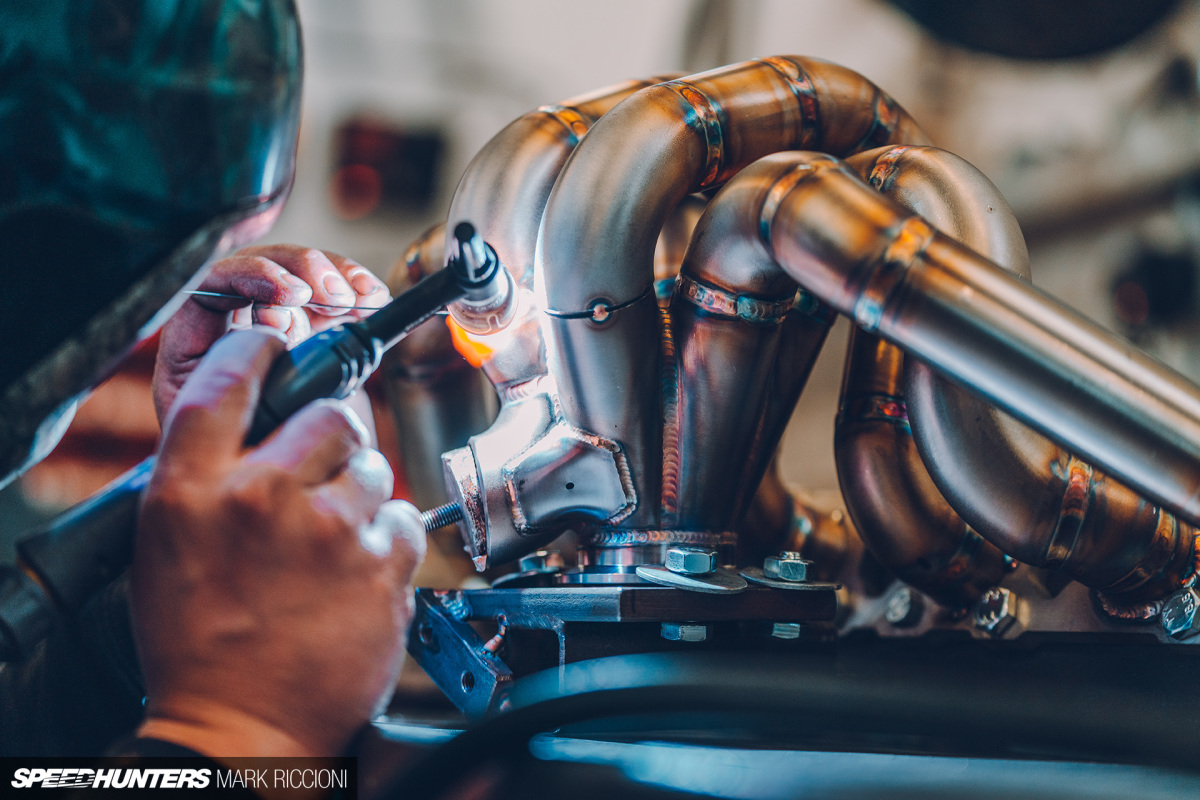
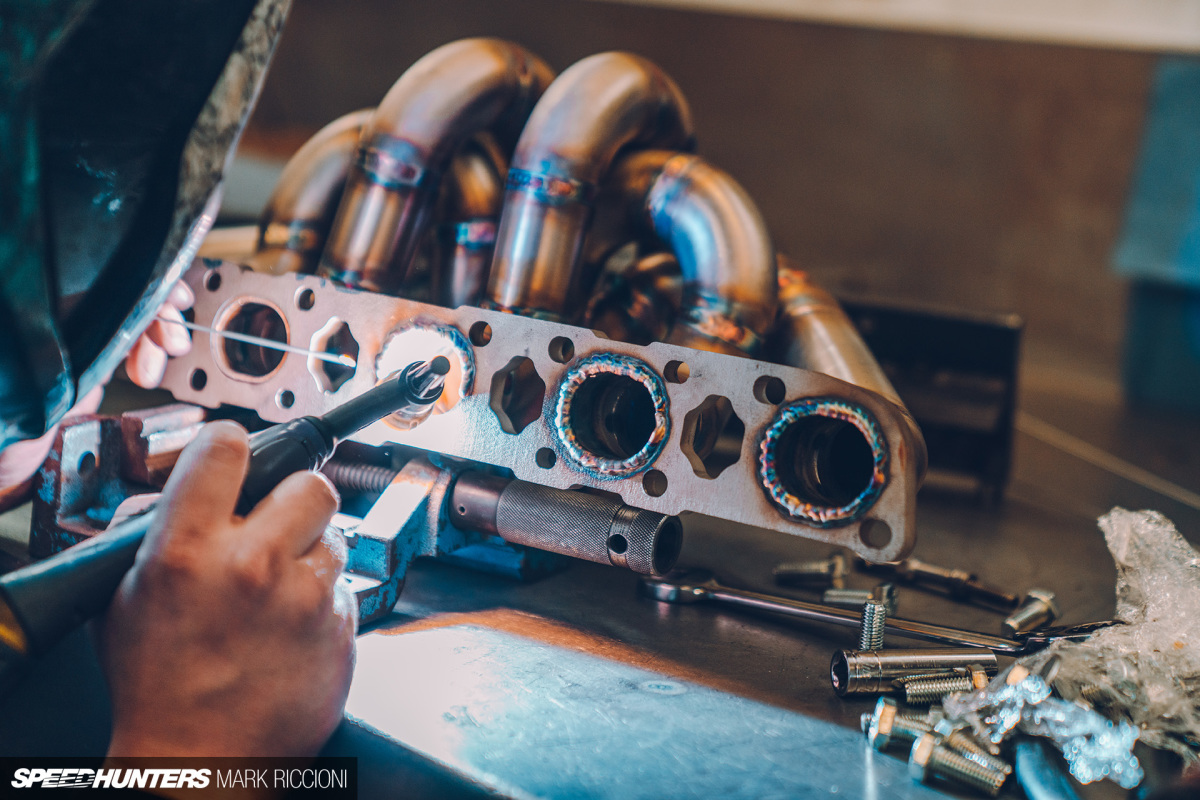
With Mike happy with the construction of the manifold, the final job is to grind the back of the head flange to a smooth and flat finish. This is done after the primaries have been welded from the back, ensuring the manifold sits perfectly against the cylinder head without disruption.

Then, when Mike’s really happy, the manifold gets a badass Walton Motorsport badge.
There are of course many ways to build a single turbo manifold, and I’m sure we’ll have some interesting discussions over in the comments section too. But seeing the extent of work that goes into one of these manifolds has unsurprisingly given me a whole new level of appreciation, and an understanding of why they demand a higher price.

It speaks volume that you’ll find most professional drift cars in the UK running Walton Motorsport manifolds. Not to mention Speedhunters favourite Norwegian, Fredric Aasbø, also switching to a Walton item on his new 2JZ-powered GR Supra. This is Mike and Andy’s passion after all. They’re not just fabricating manifolds for #weldporn on Instagram; they’re building ‘em to be used properly, from street and track days right through to competitive motorsports.

Before we wrap up this behemoth of an update, I wanted to ask Andy what his top three criteria for a manifold were, regardless of cost or manufacturer. We all know our builds are dictated by many variables – especially cost – but if you can keep these in the back of your mind it’ll help determine which manifold is right for you.

#1: Flow
This is how power is made. The more efficiently the manifold can get the gas away from the engine, the more gas the engine can produce. That goes for turbo and naturally aspirated cars, but on a turbo platform the better the flow equals the better your turbo performs.

#2: Wastegate Priority
The best-flowing manifold in the world is nothing if you cannot control the turbo properly. In fact, the better a manifold flows the more important controlling the wastegate is. Proper placement will improve engine response and drivability, not forgetting better engine life.

#3: Build Quality & Durability
Manifolds get hot and deal with a lot of vibration; it’s not uncommon to see low-quality manifolds start breaking up internally and wreck a turbo. It’s also extremely frustrating to have your track day or event cut short because of a crack. Broken manifolds aren’t the most fun things to remove and repair. Yes, wall thickness plays a part but more often it’s caused by poor collector construction or nasty welding.
Mark Riccioni
Instagram: mark_scenemedia
Twitter: markriccioni
mark@scene-media.com
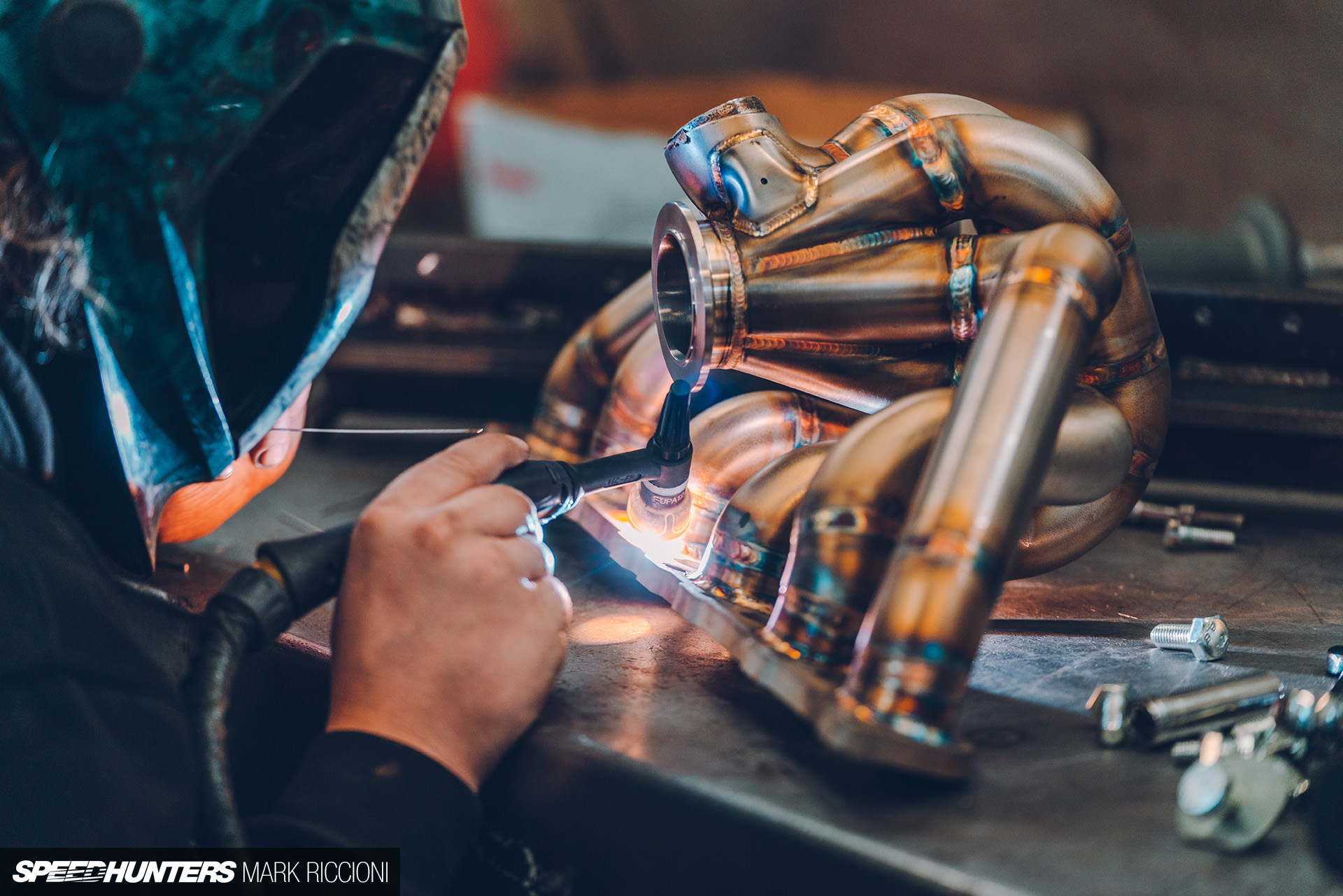

















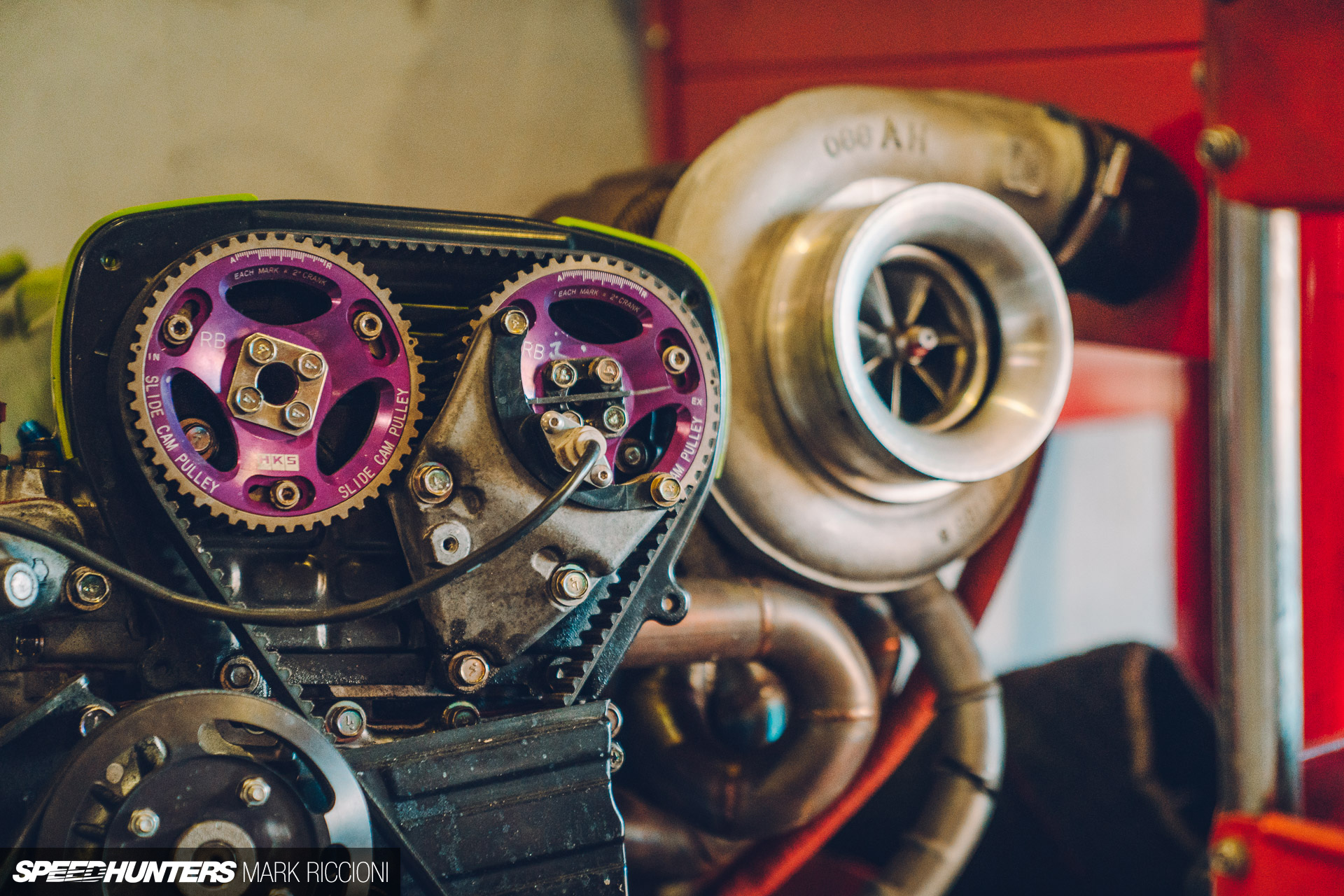







































































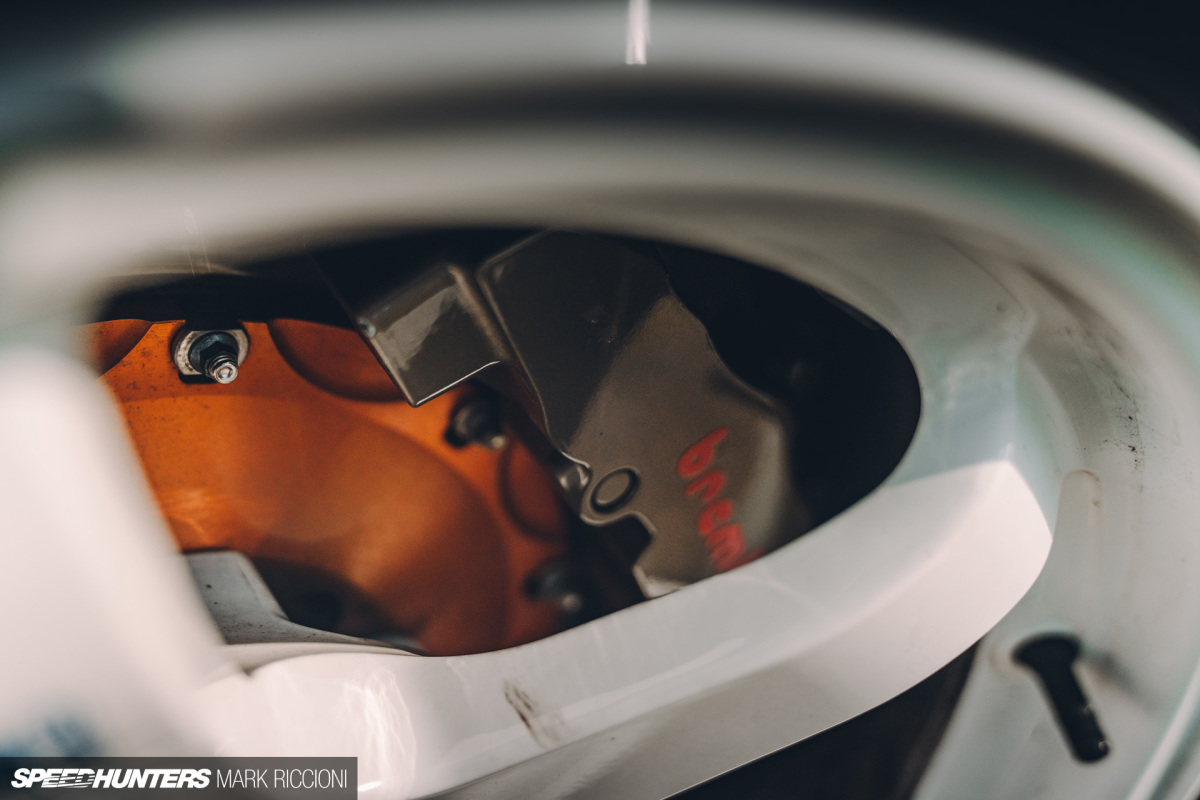

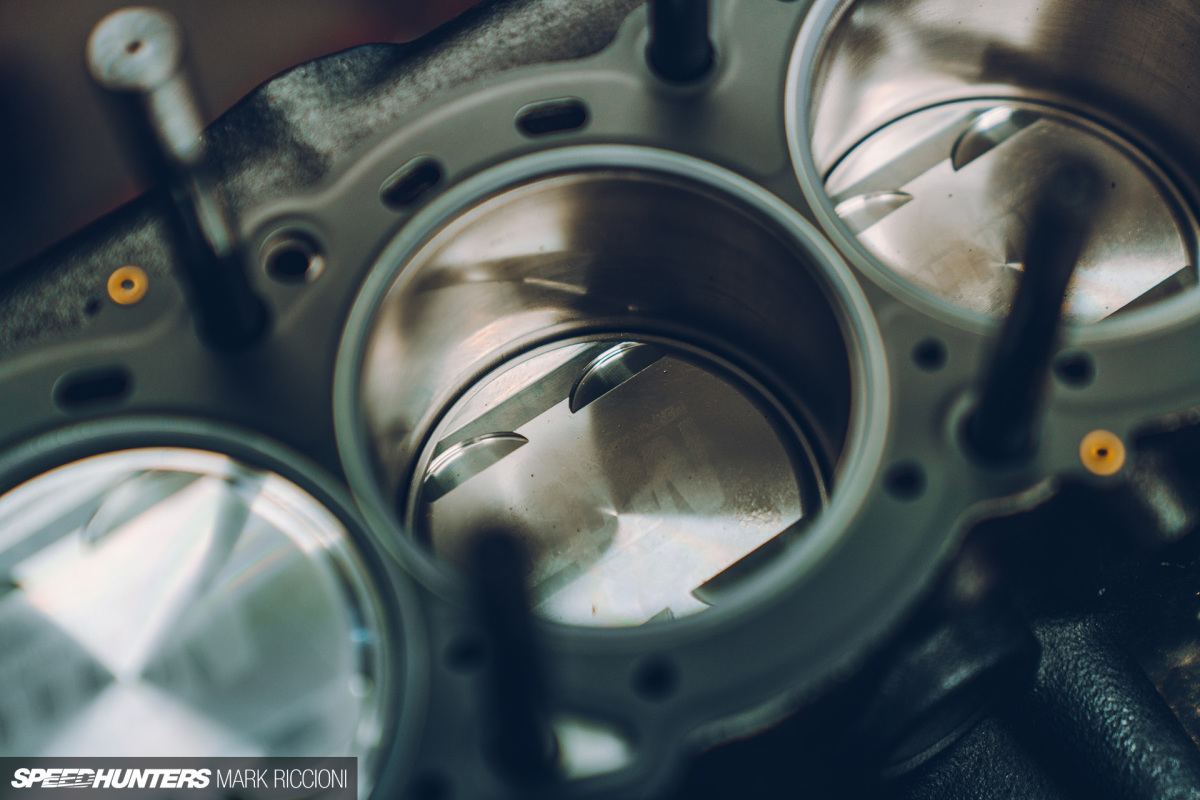
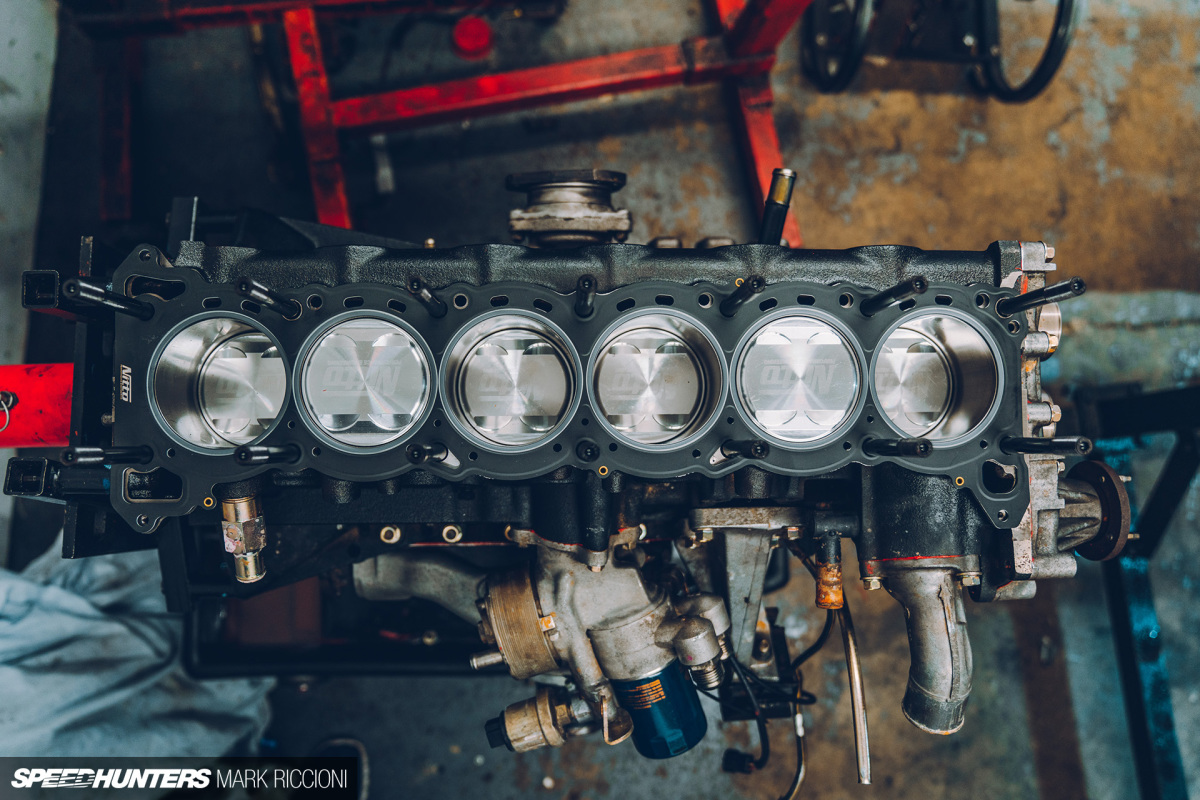

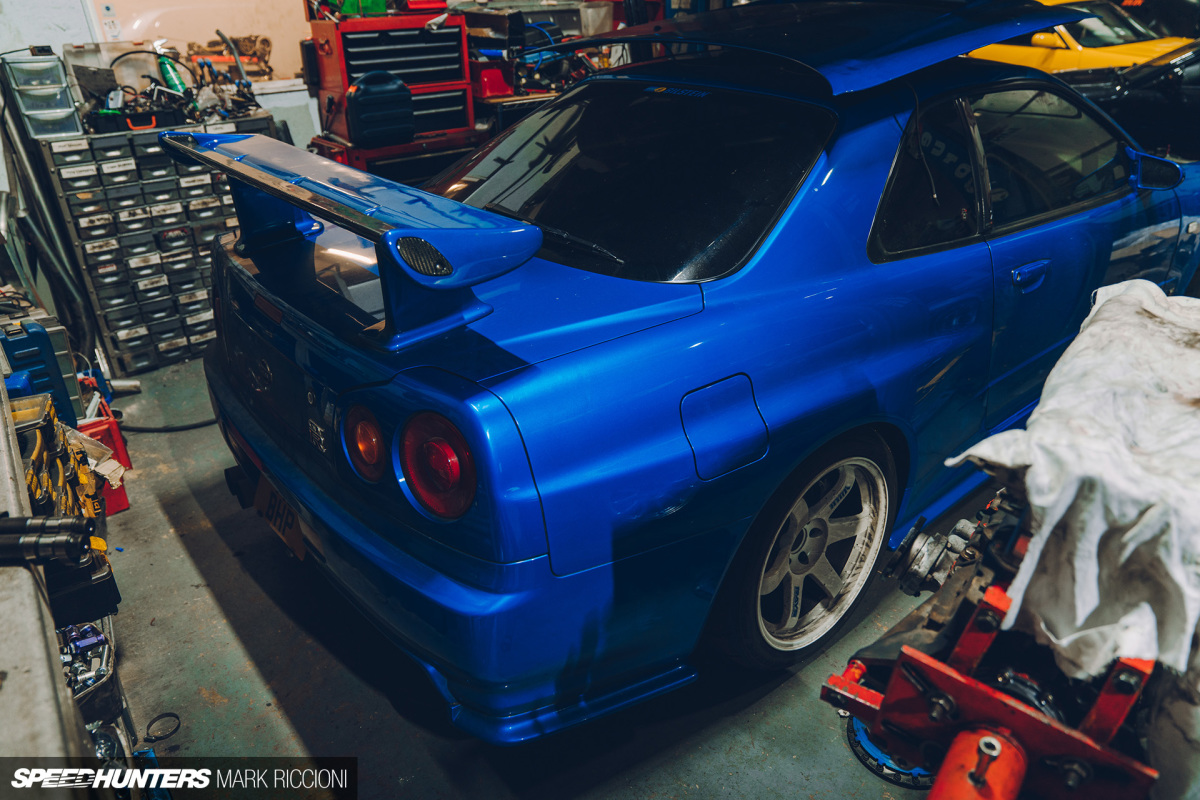
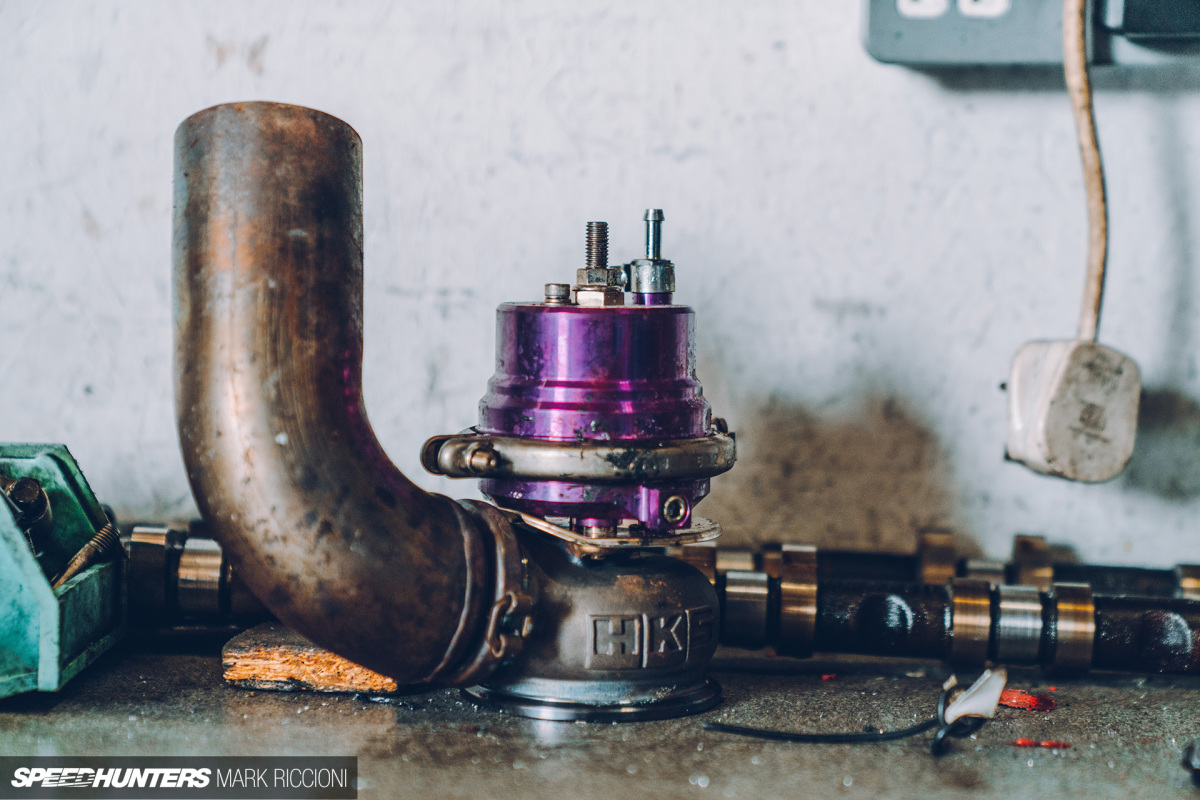
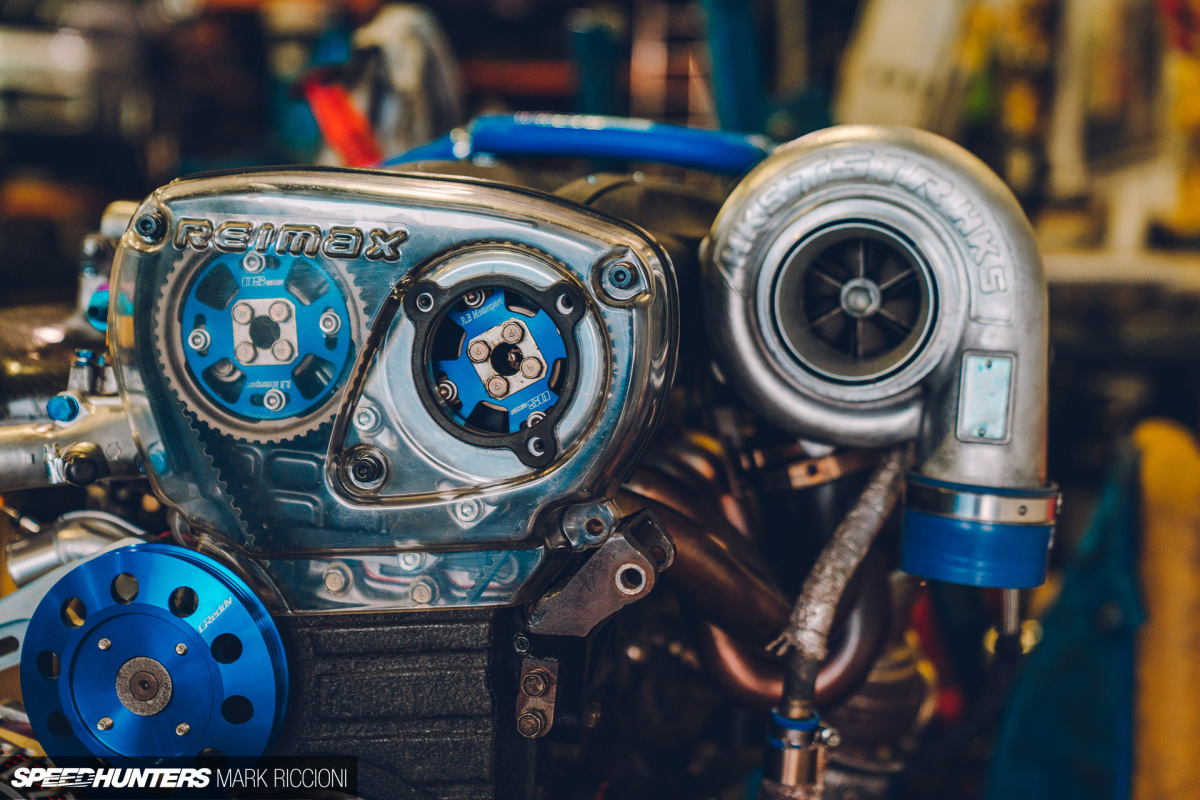
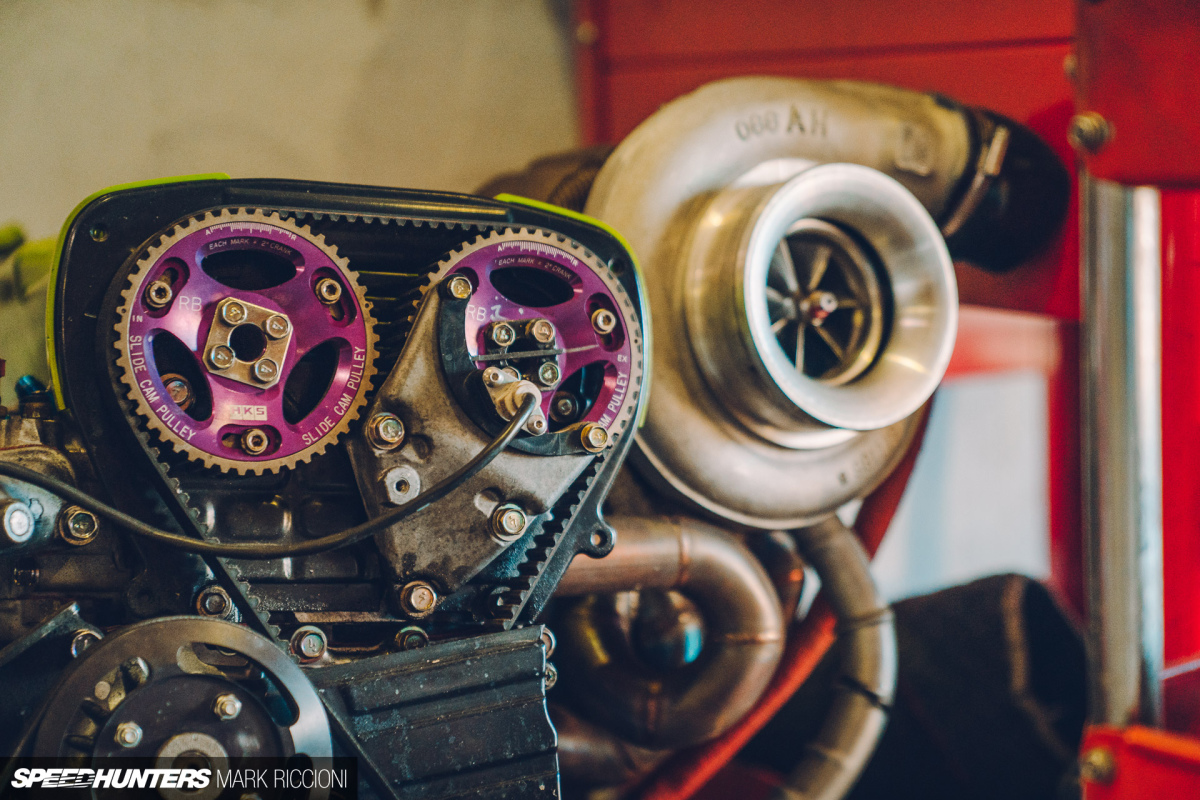
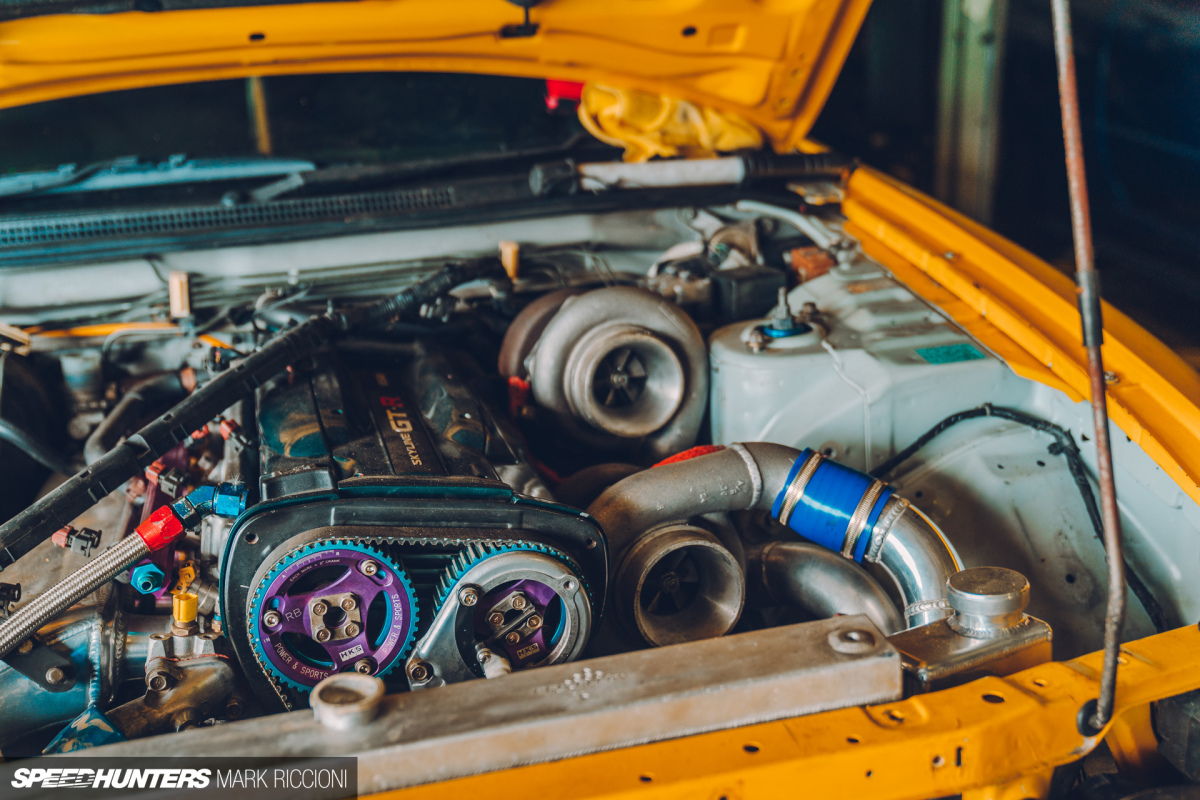
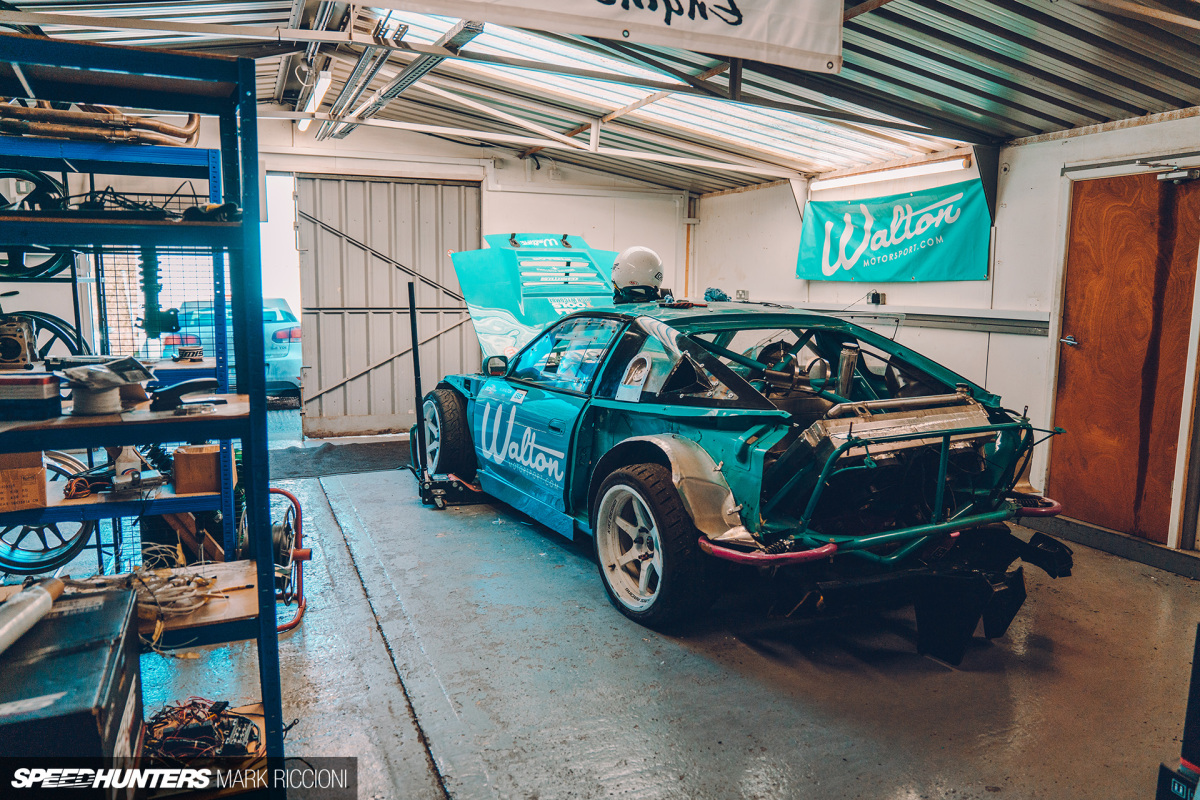
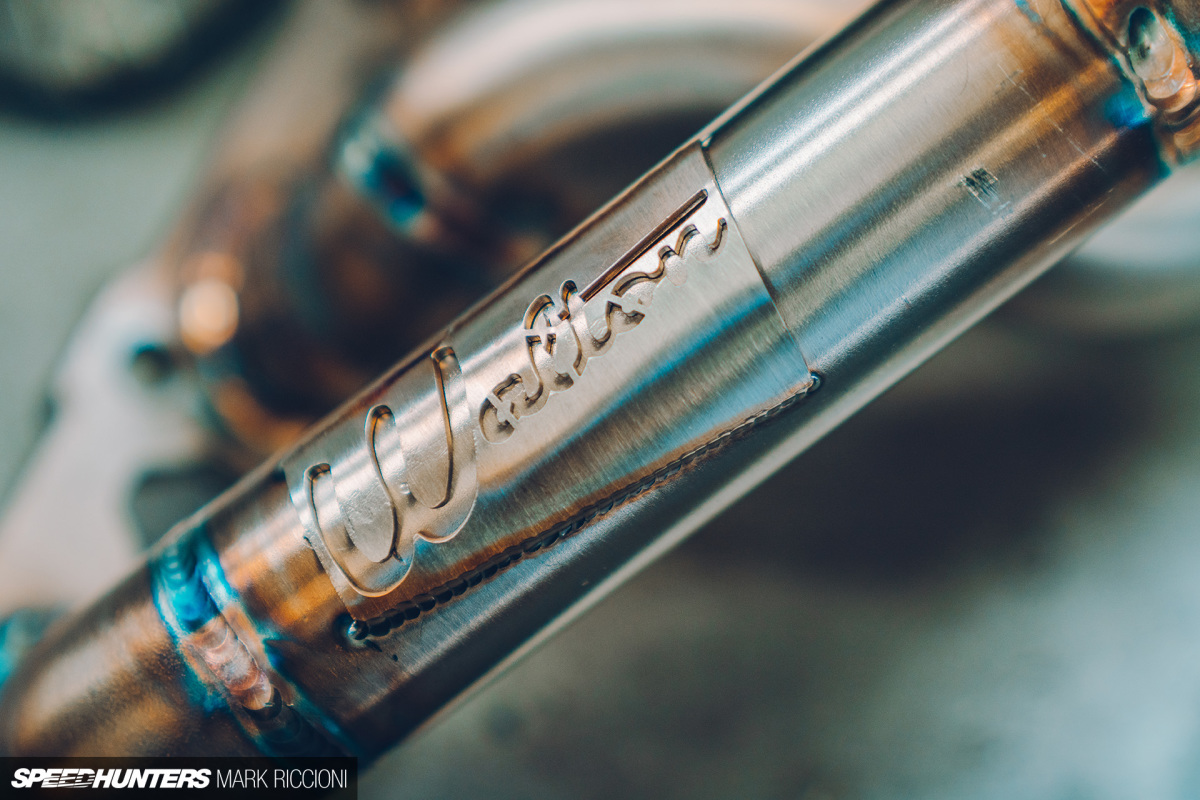
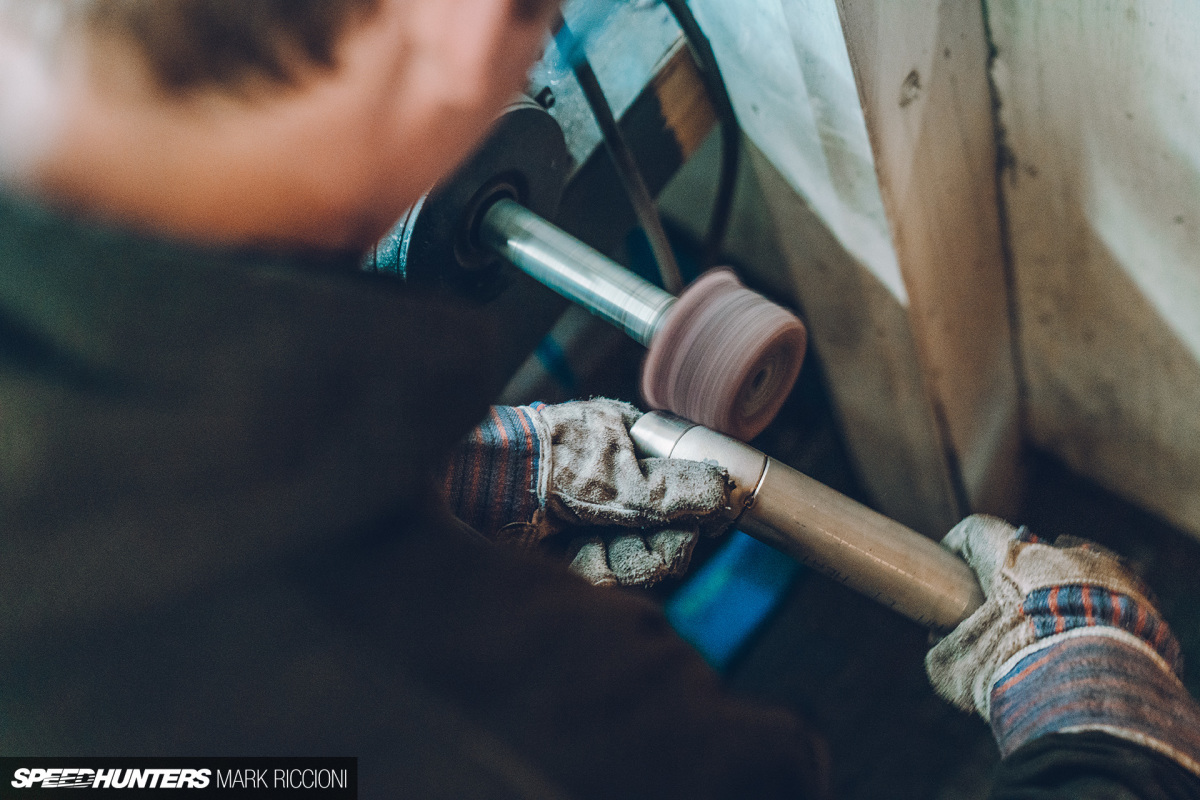
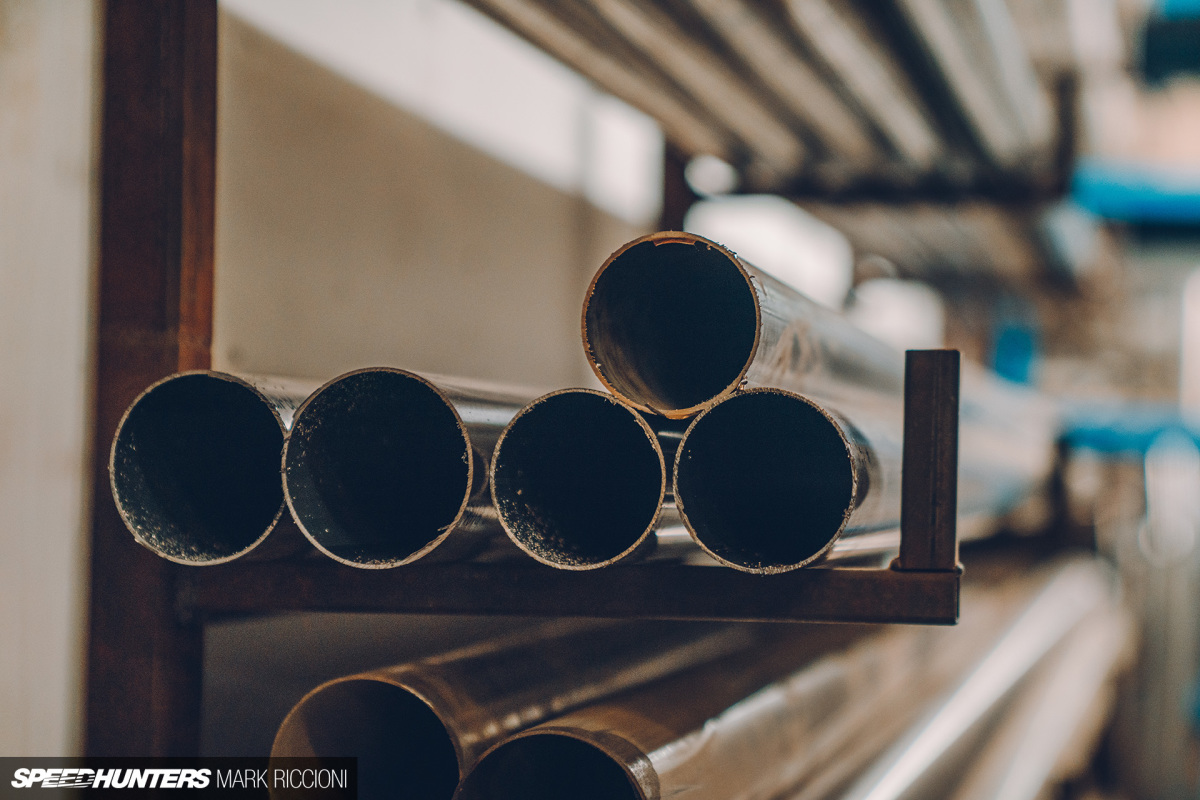
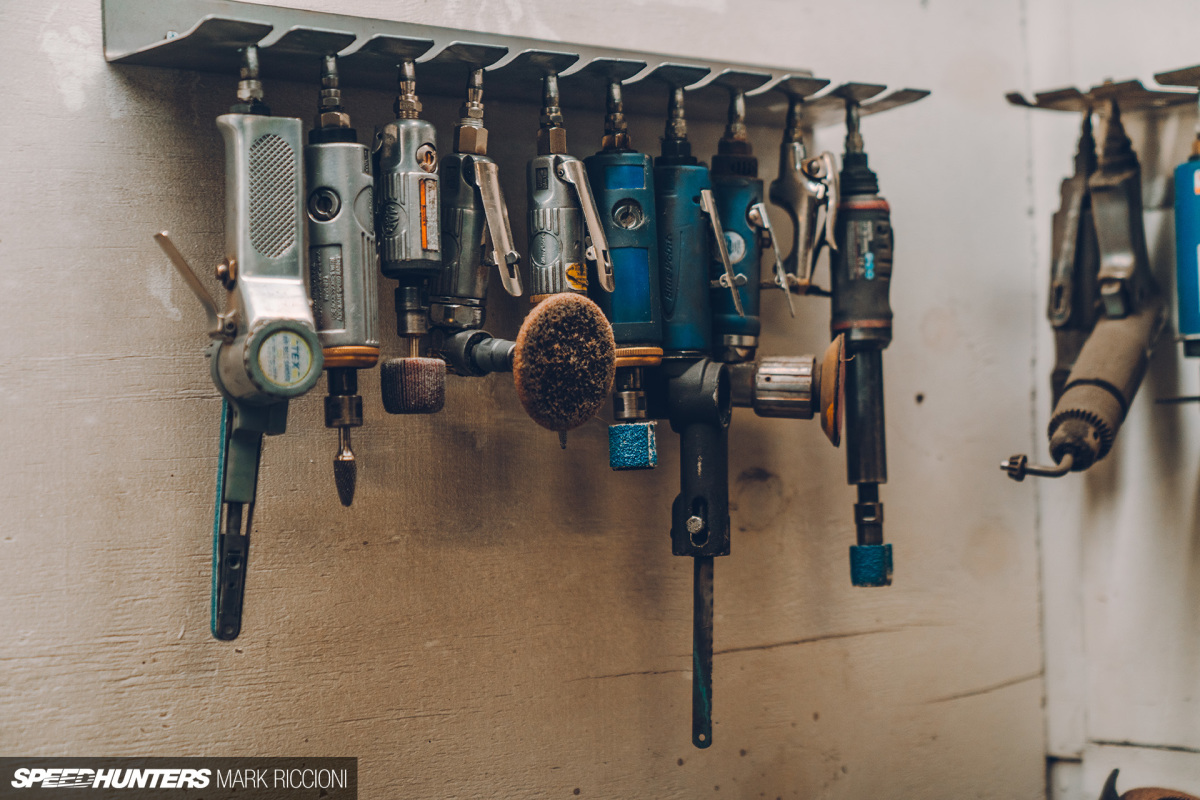
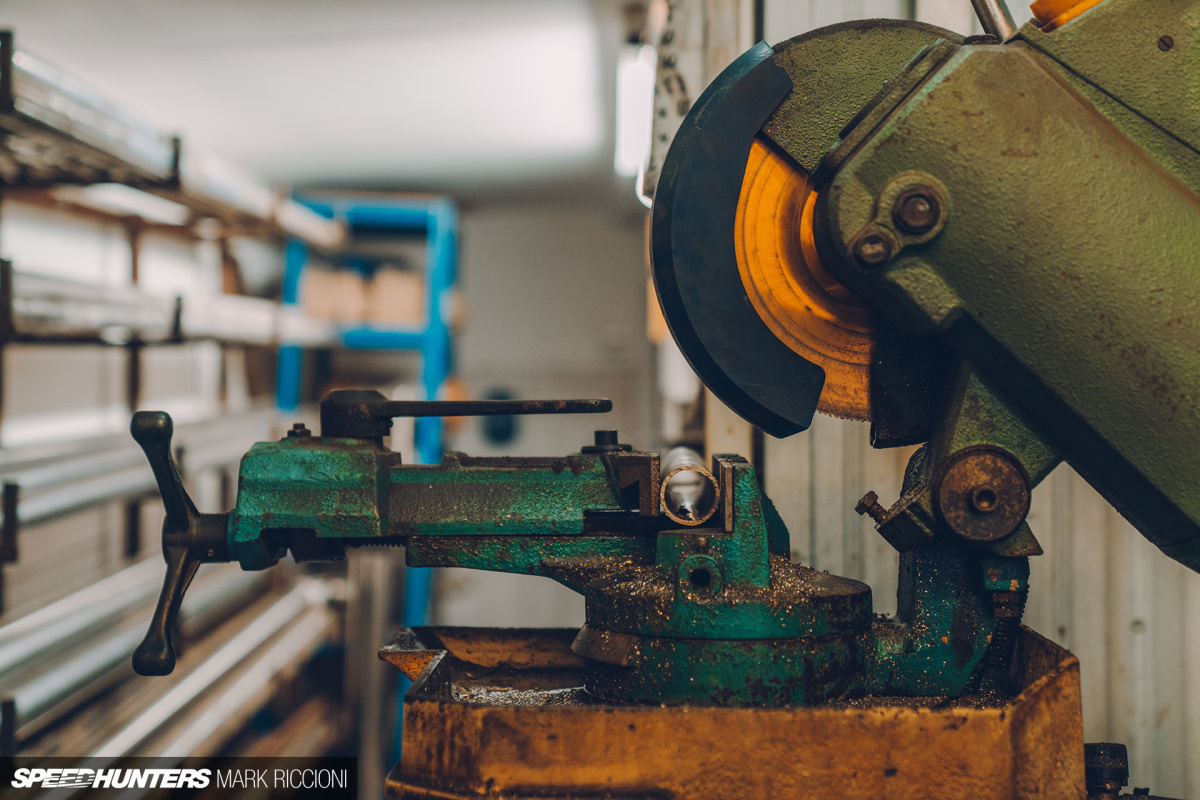
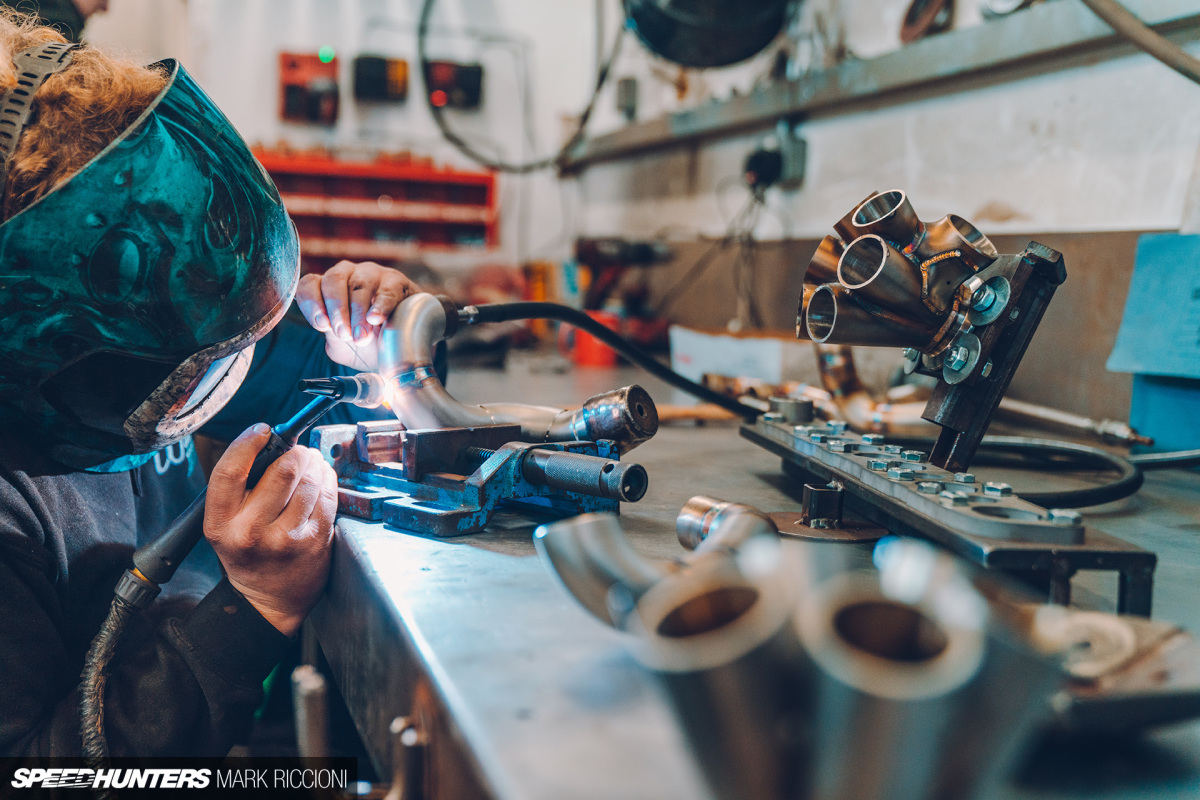
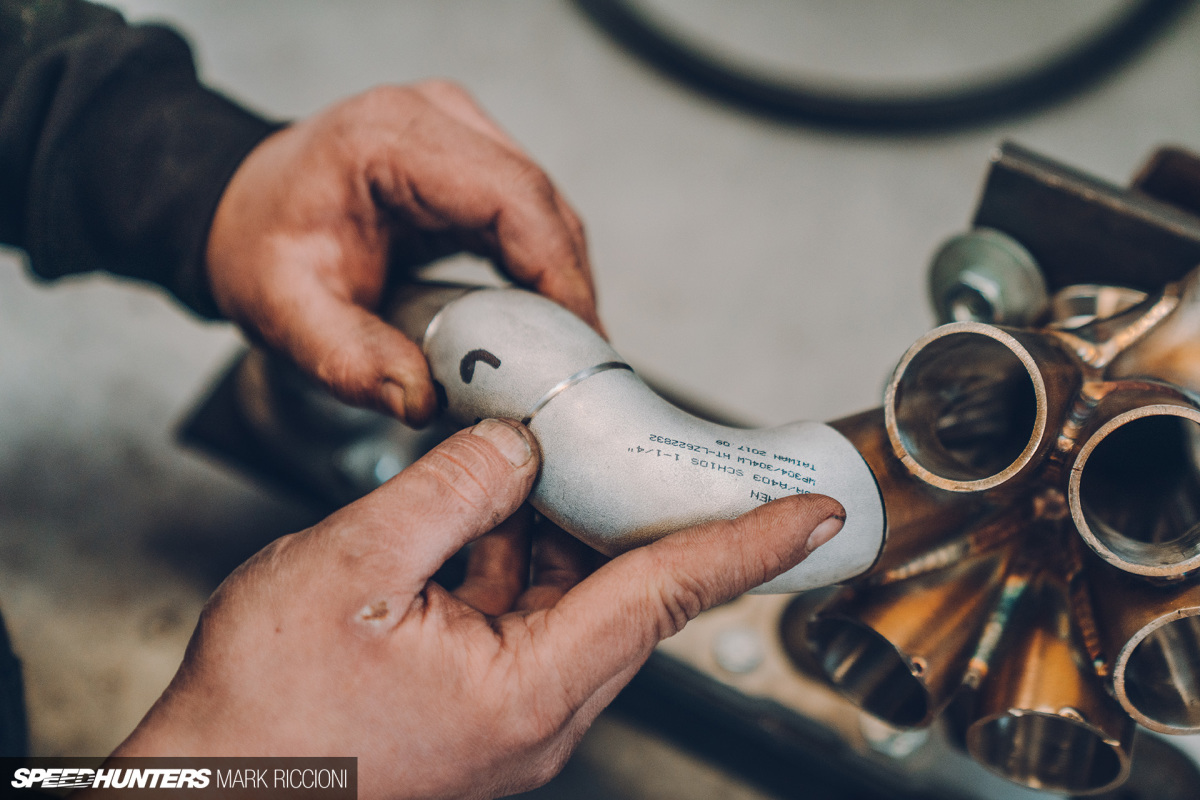
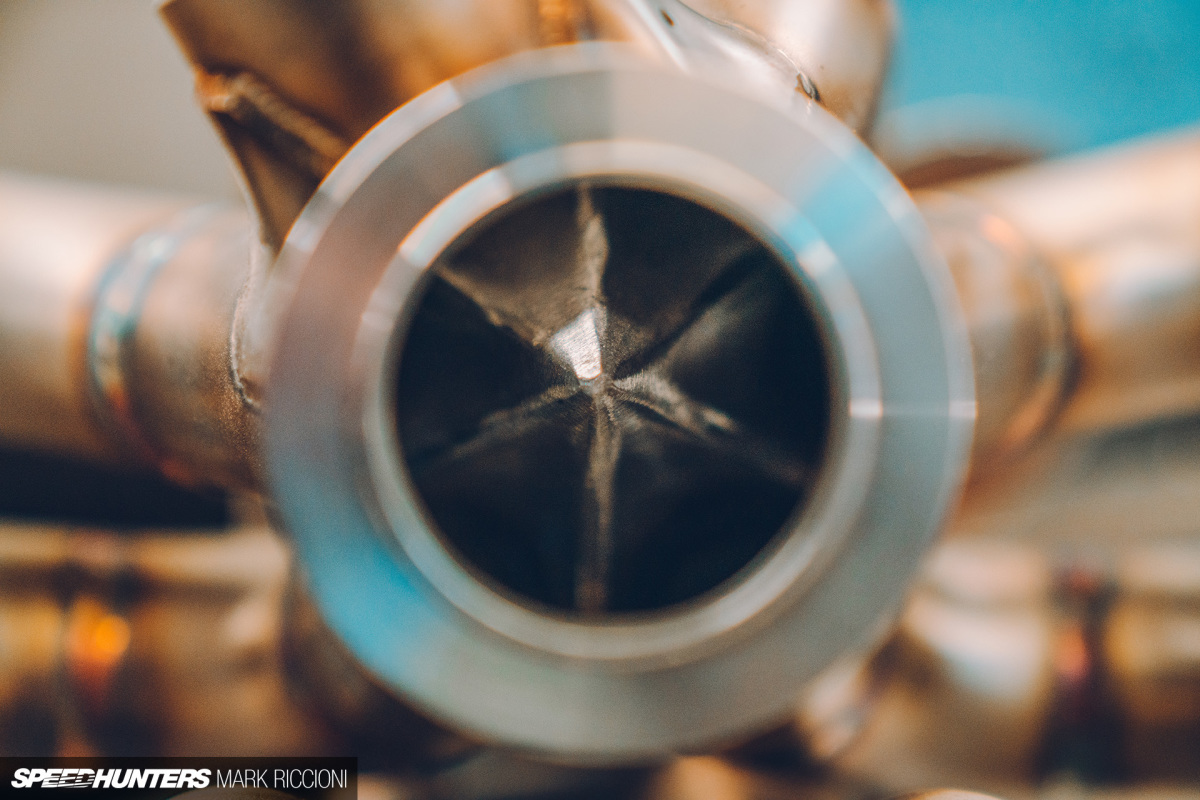
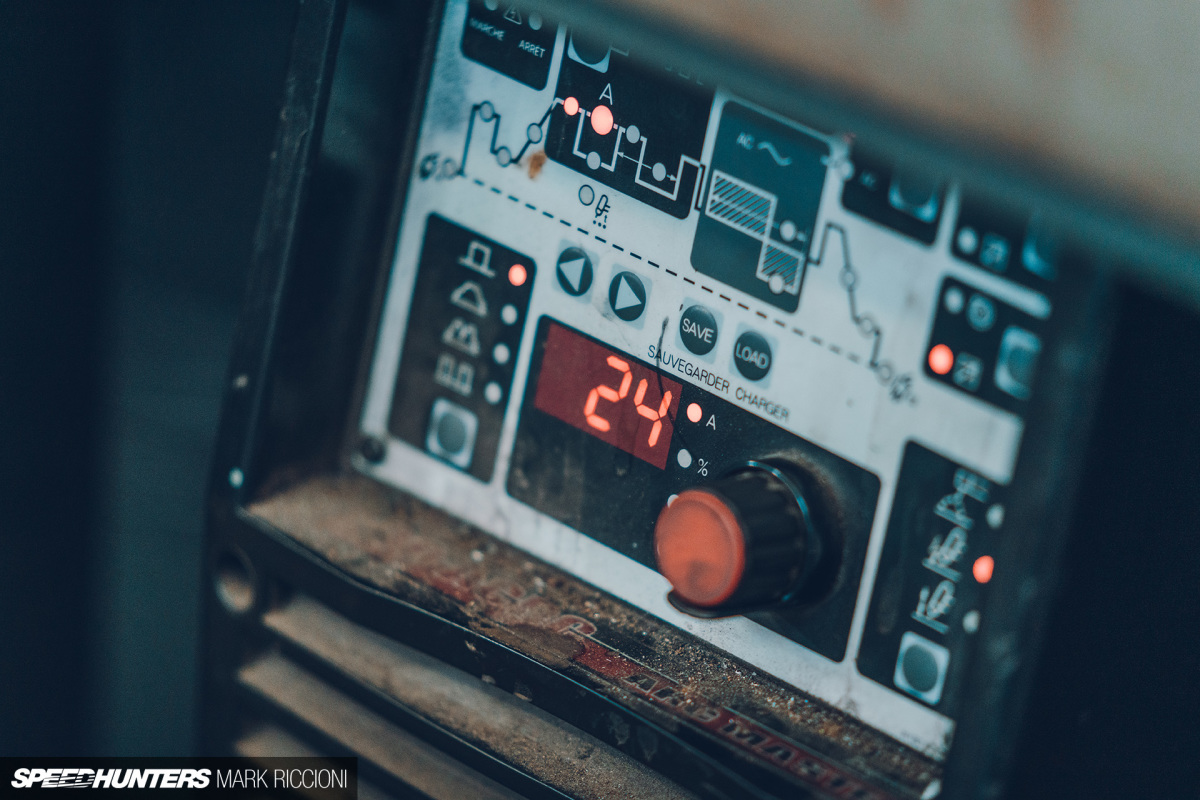
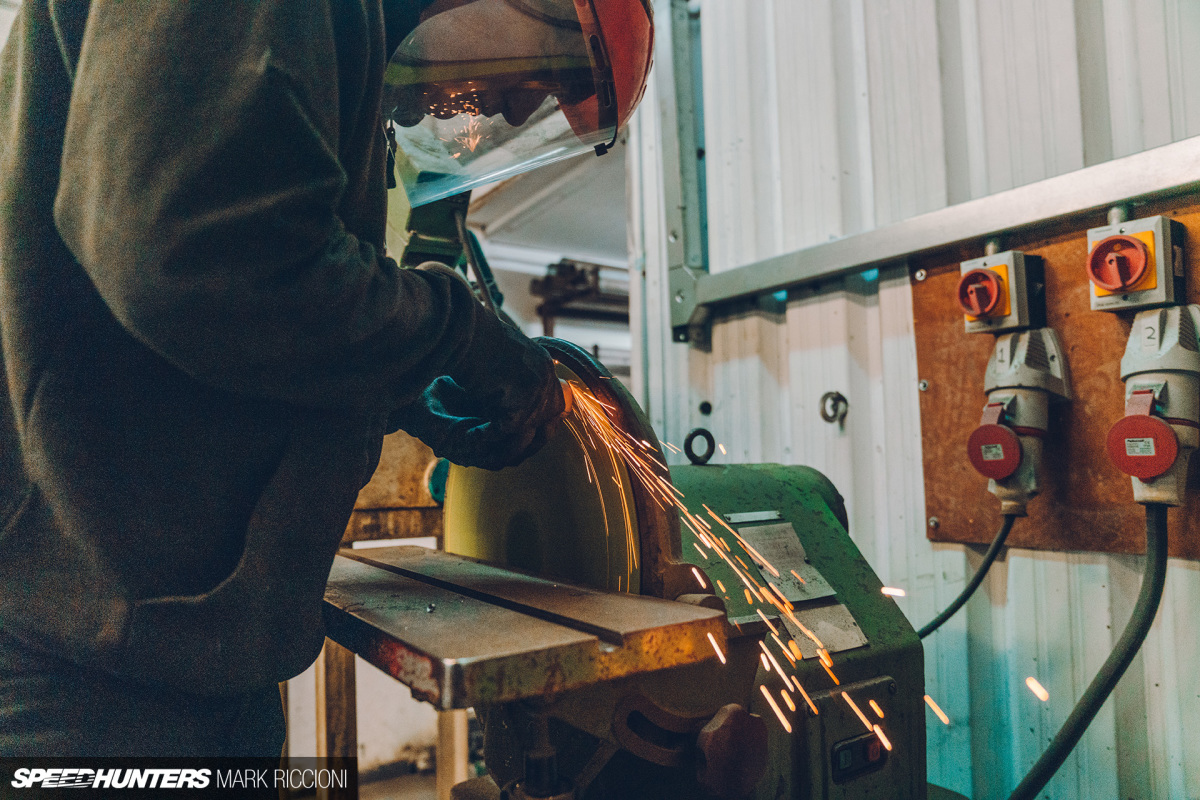
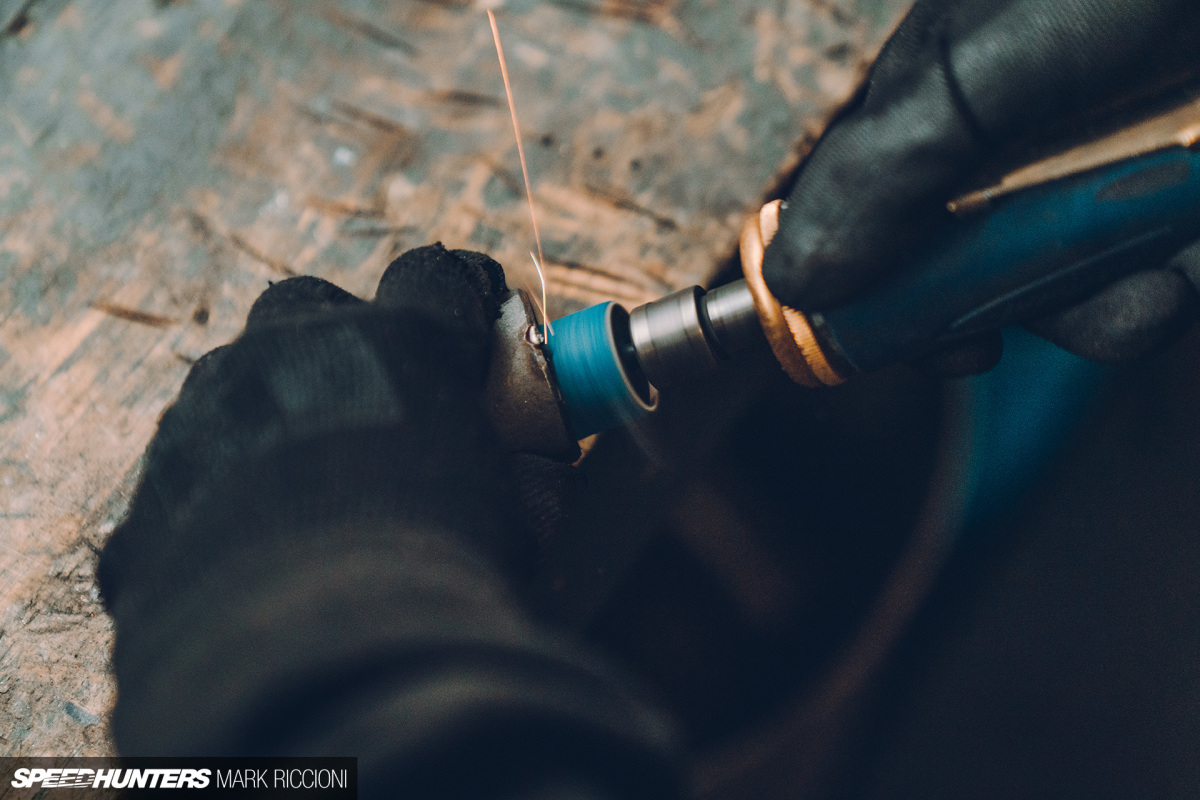
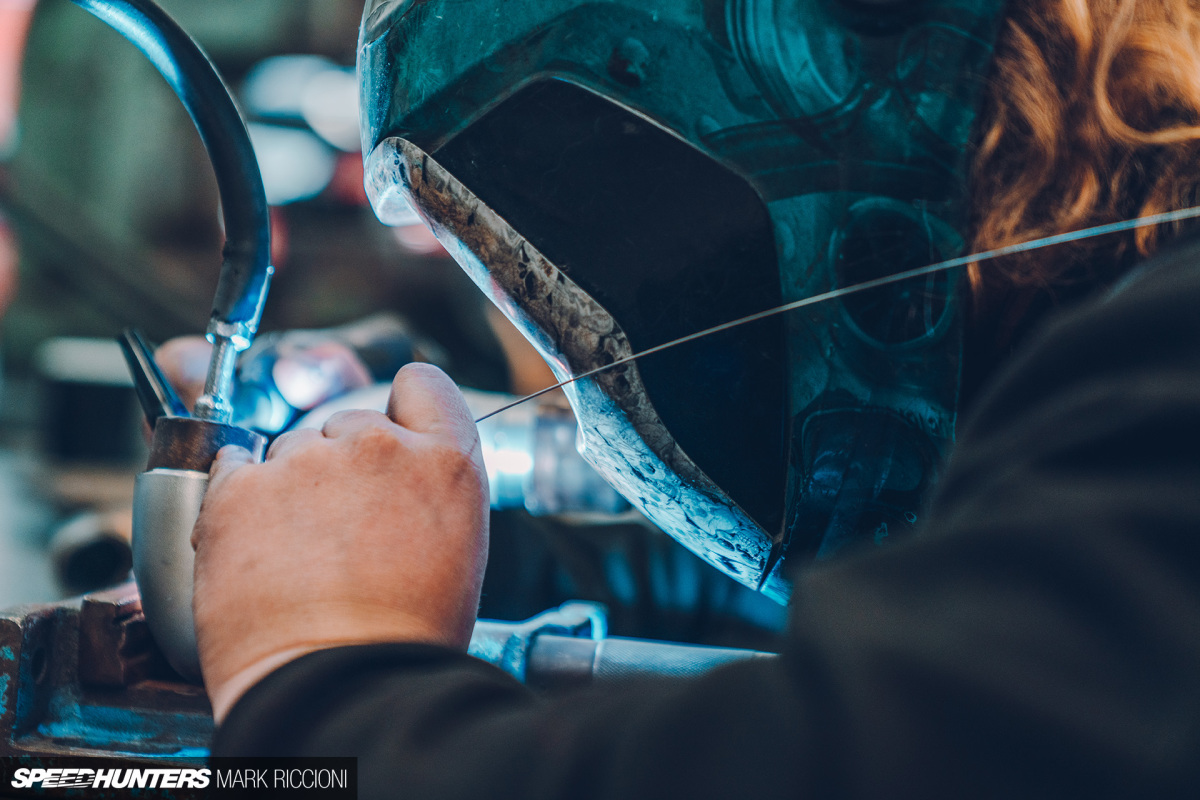
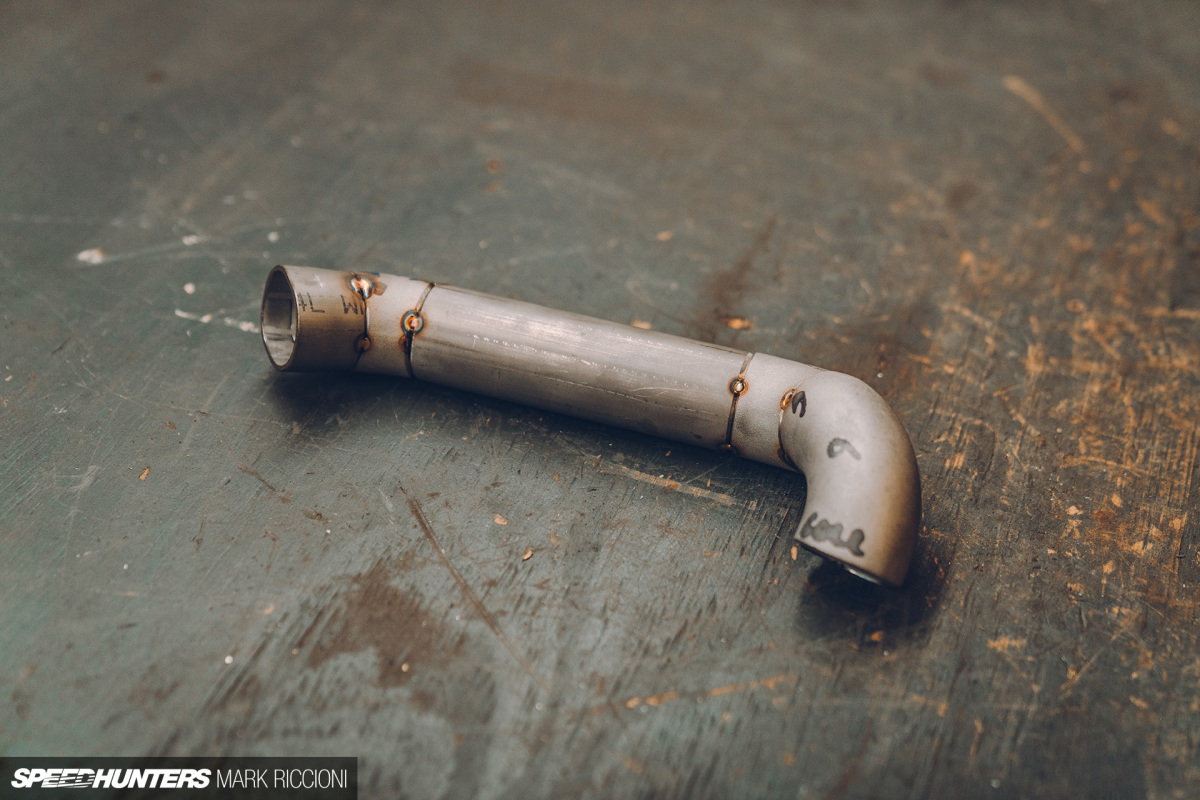
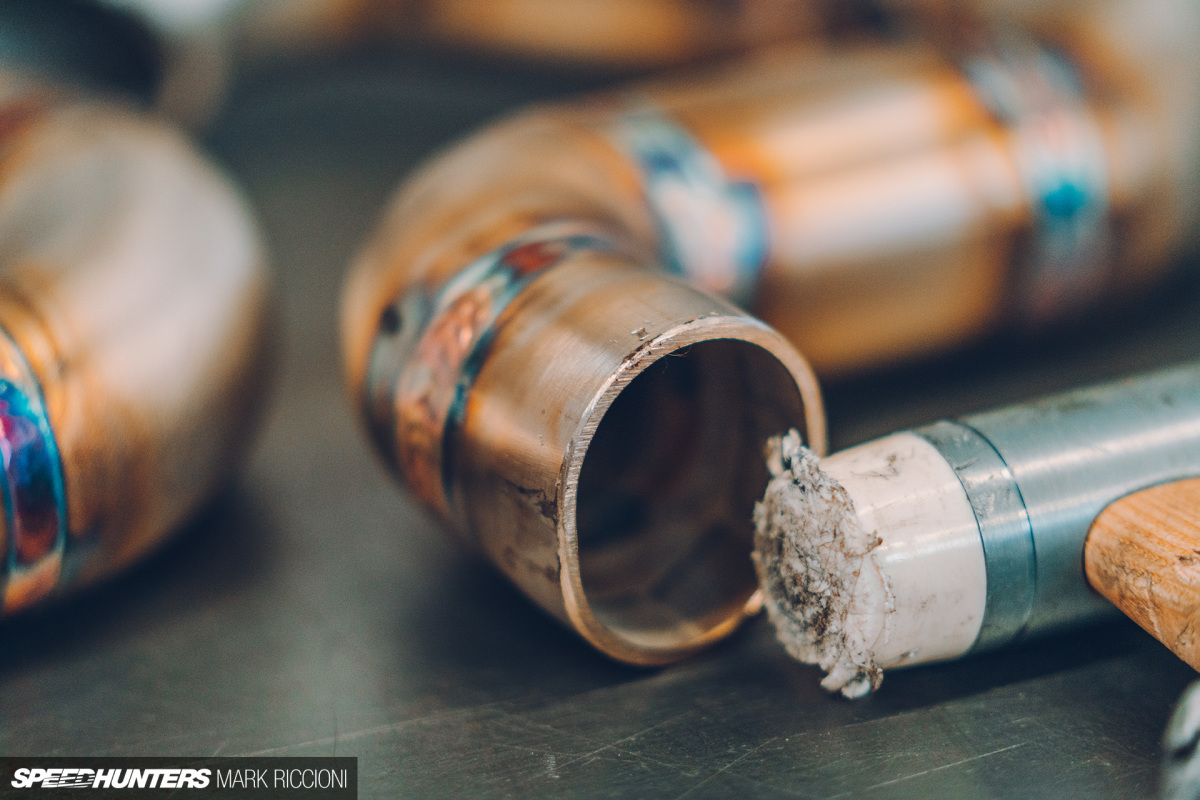
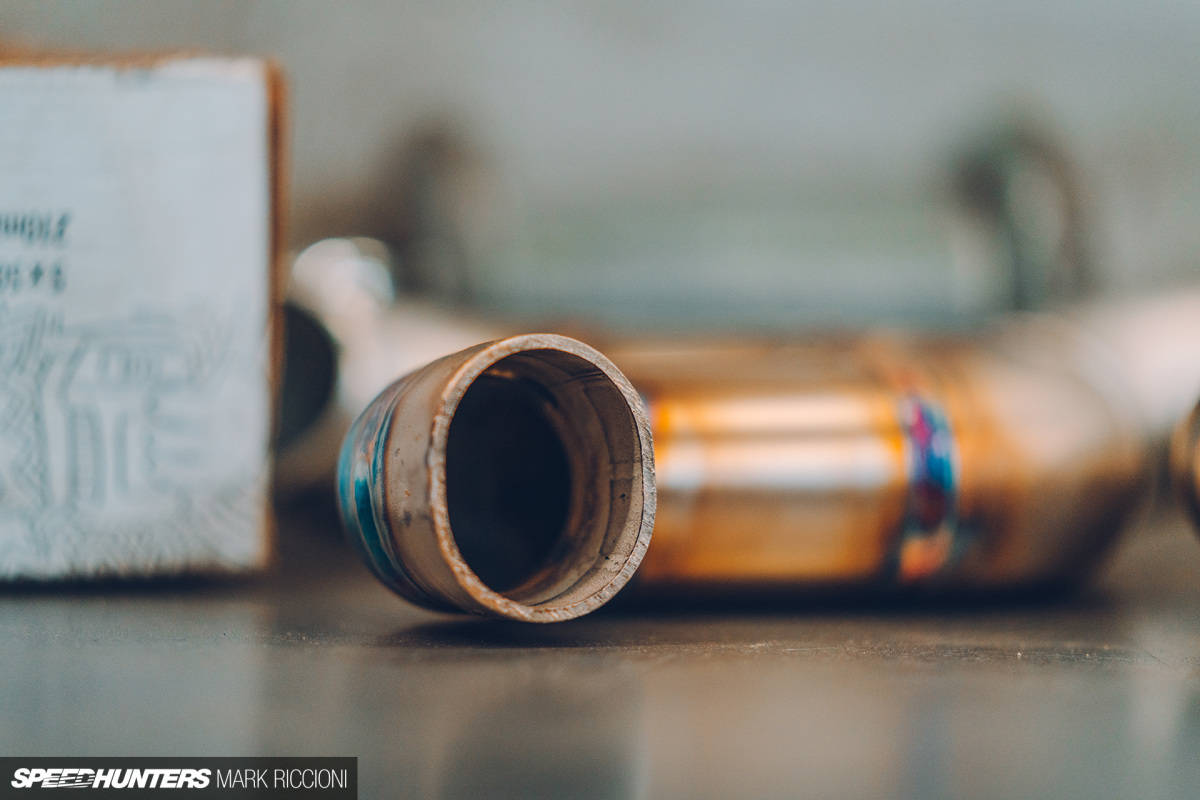
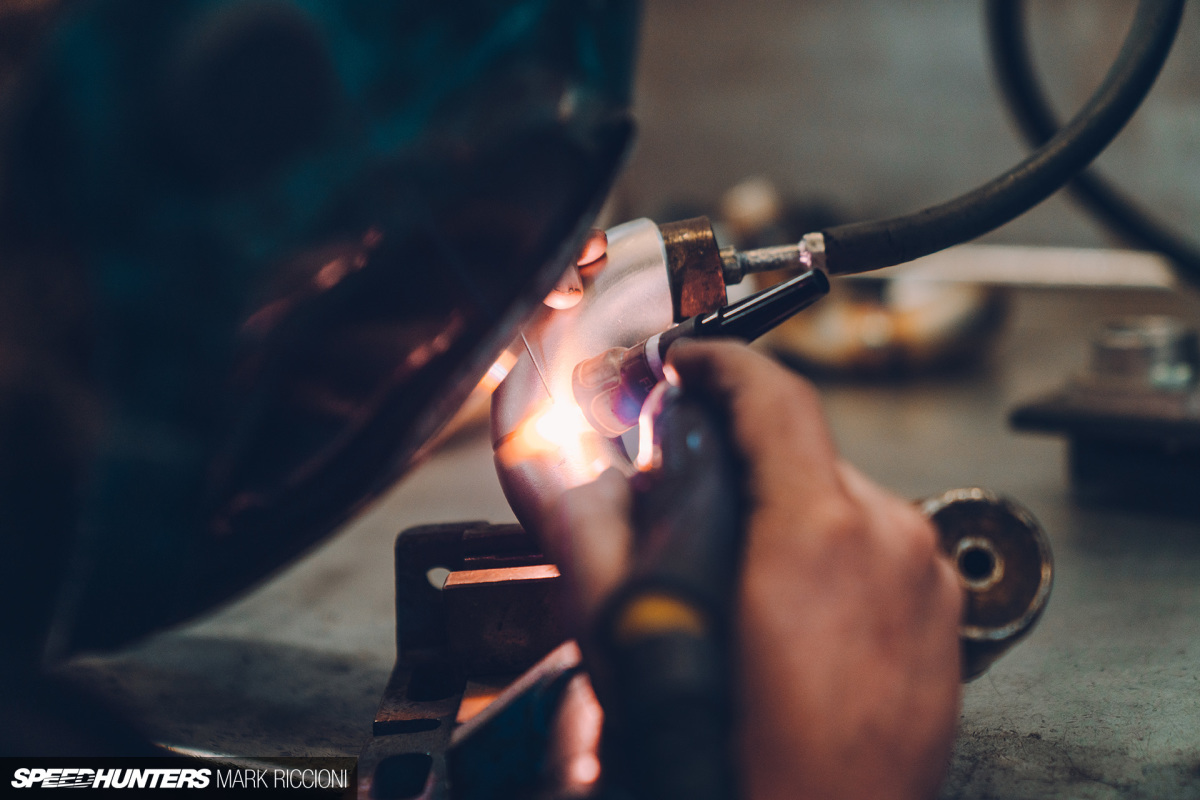
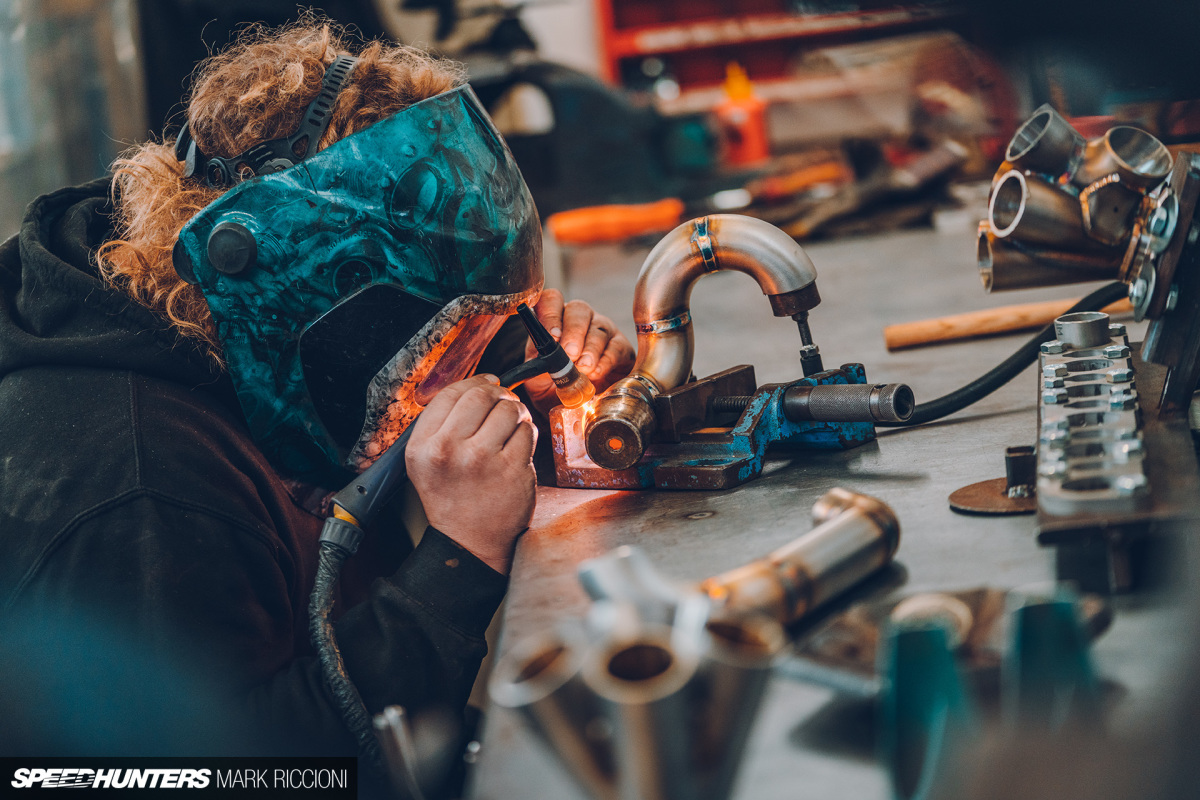
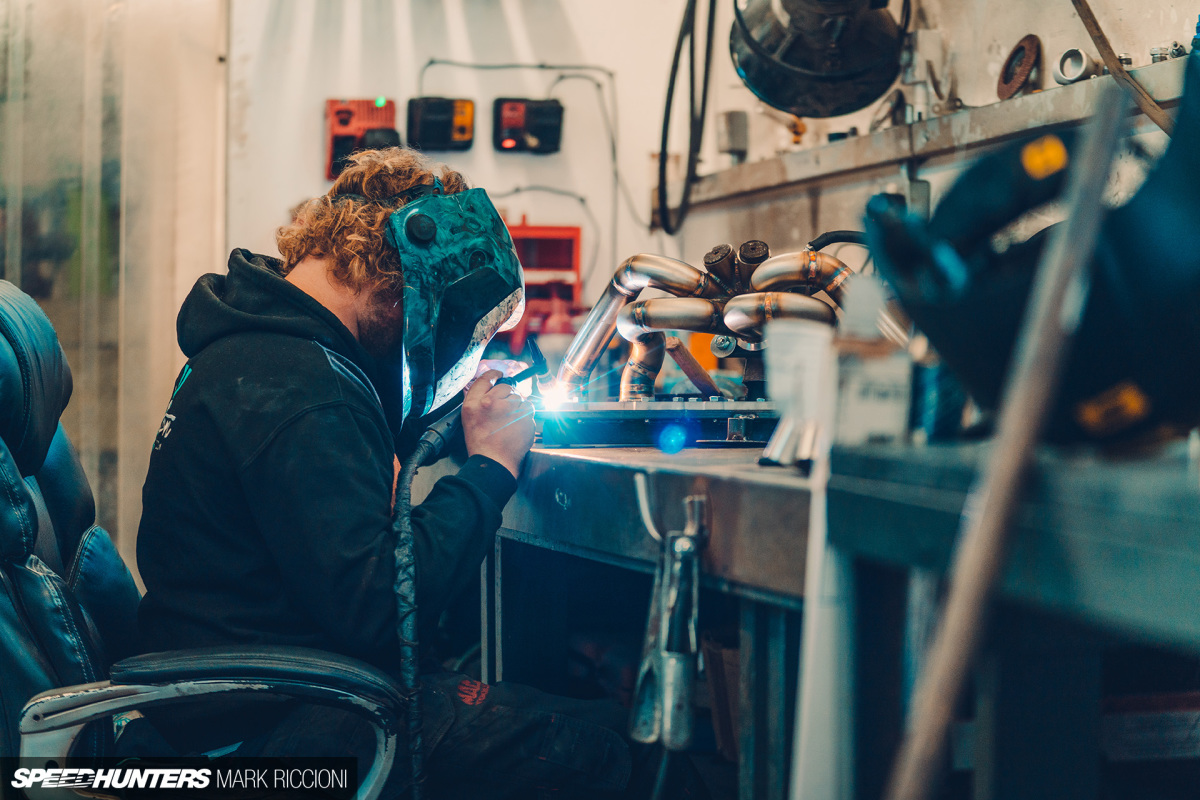
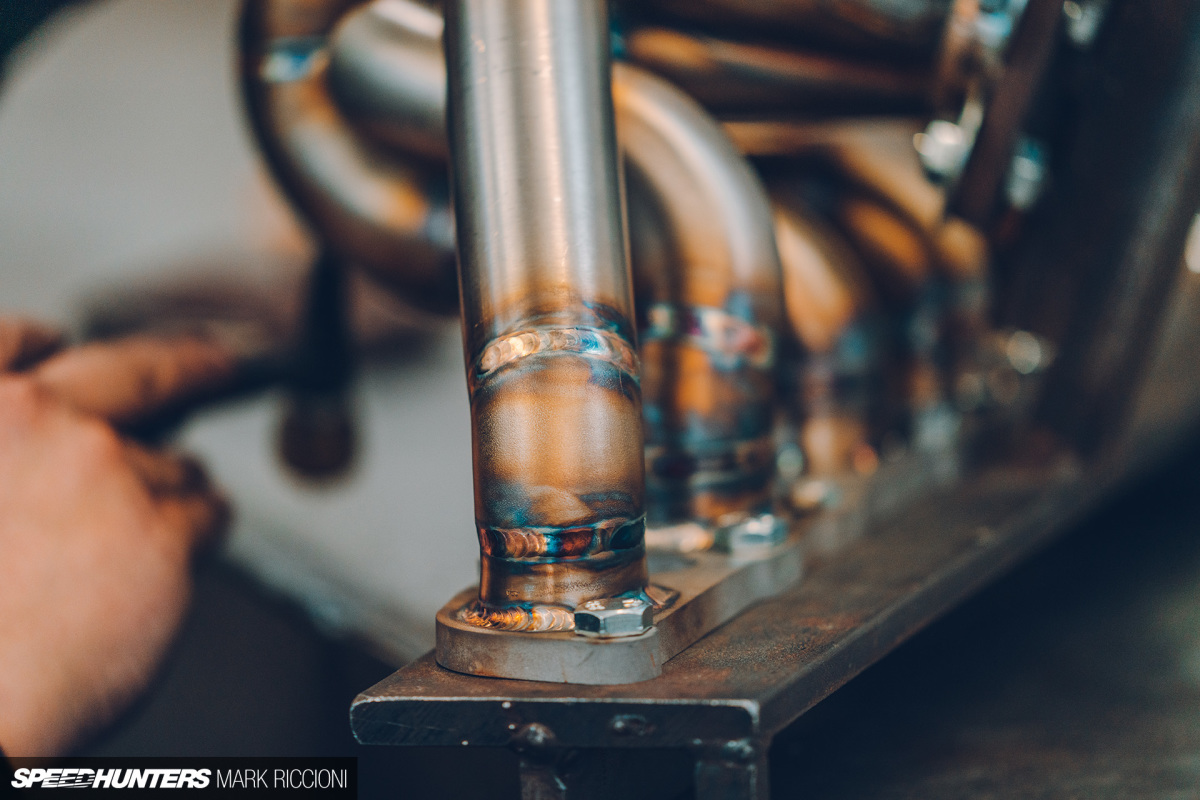
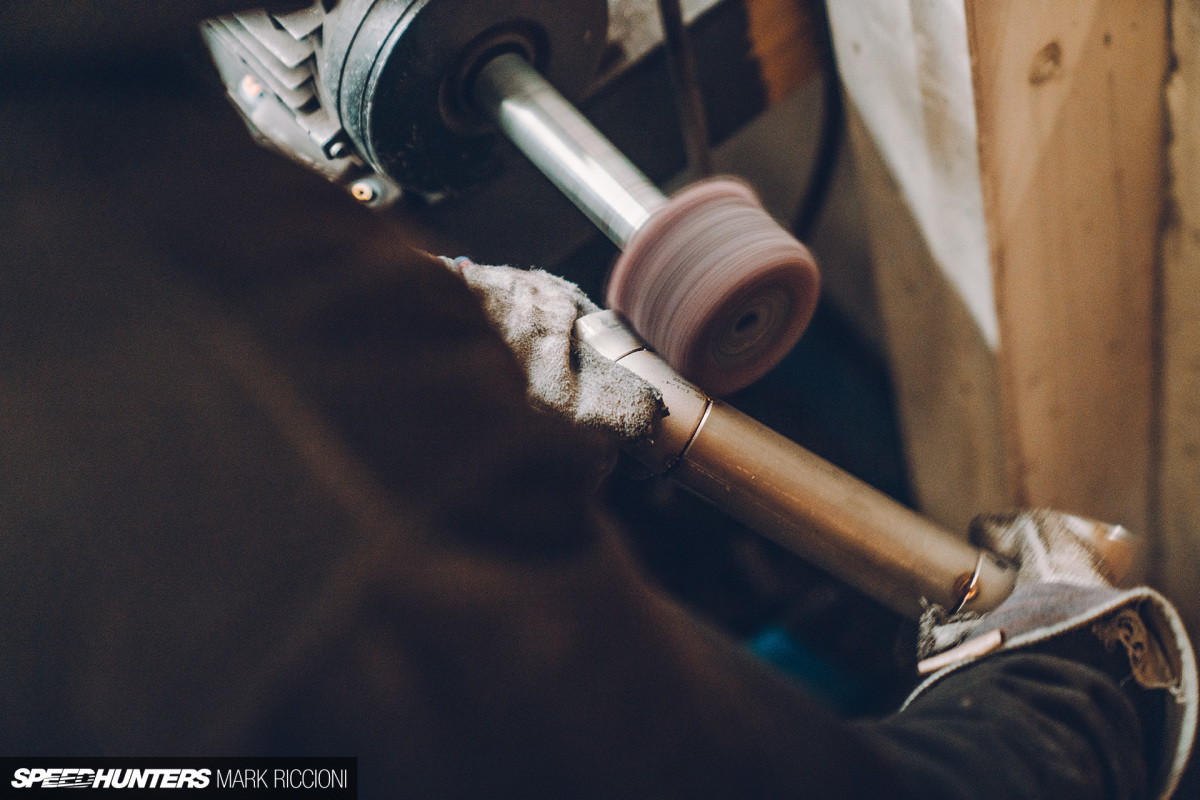
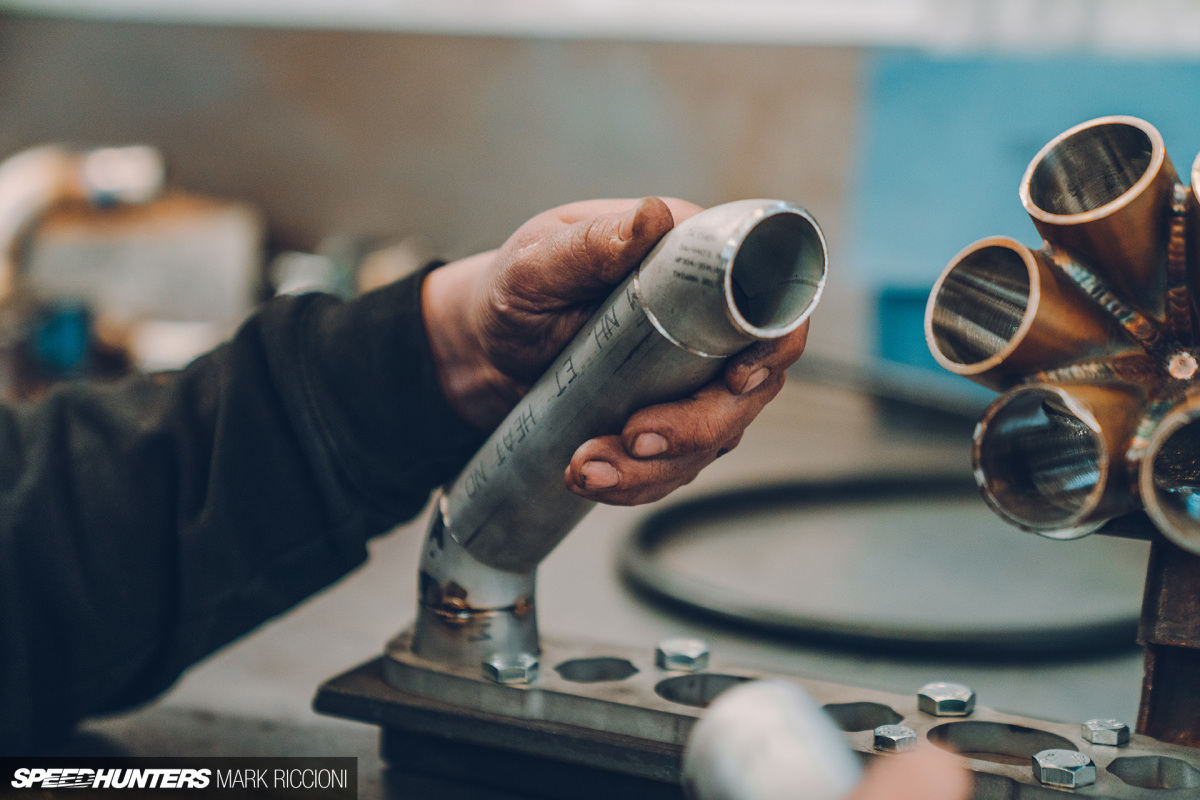


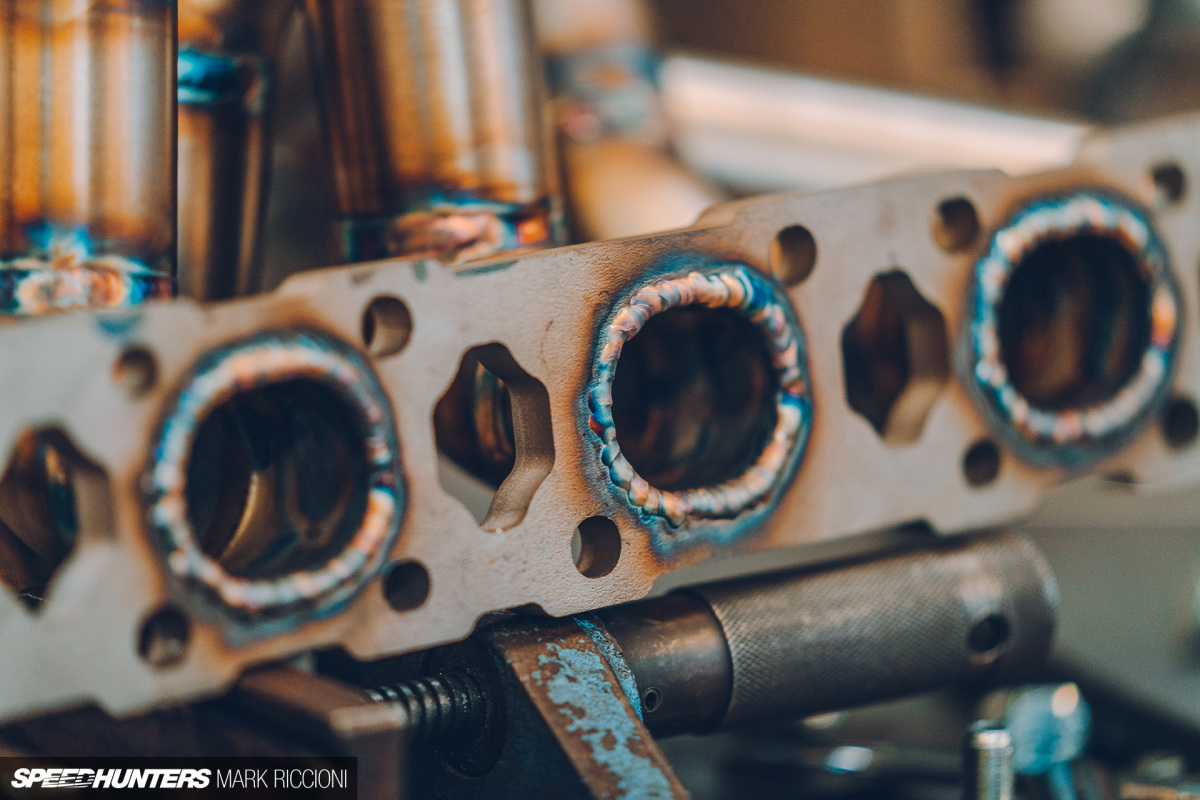
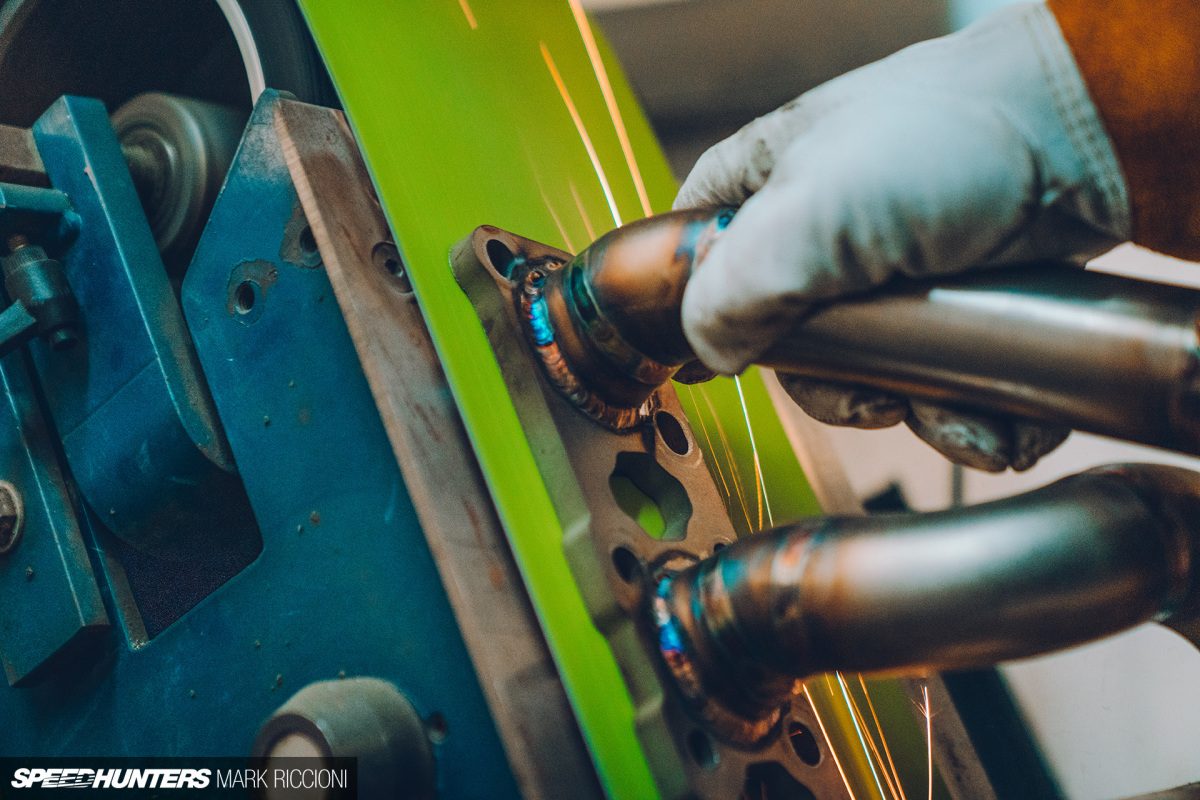
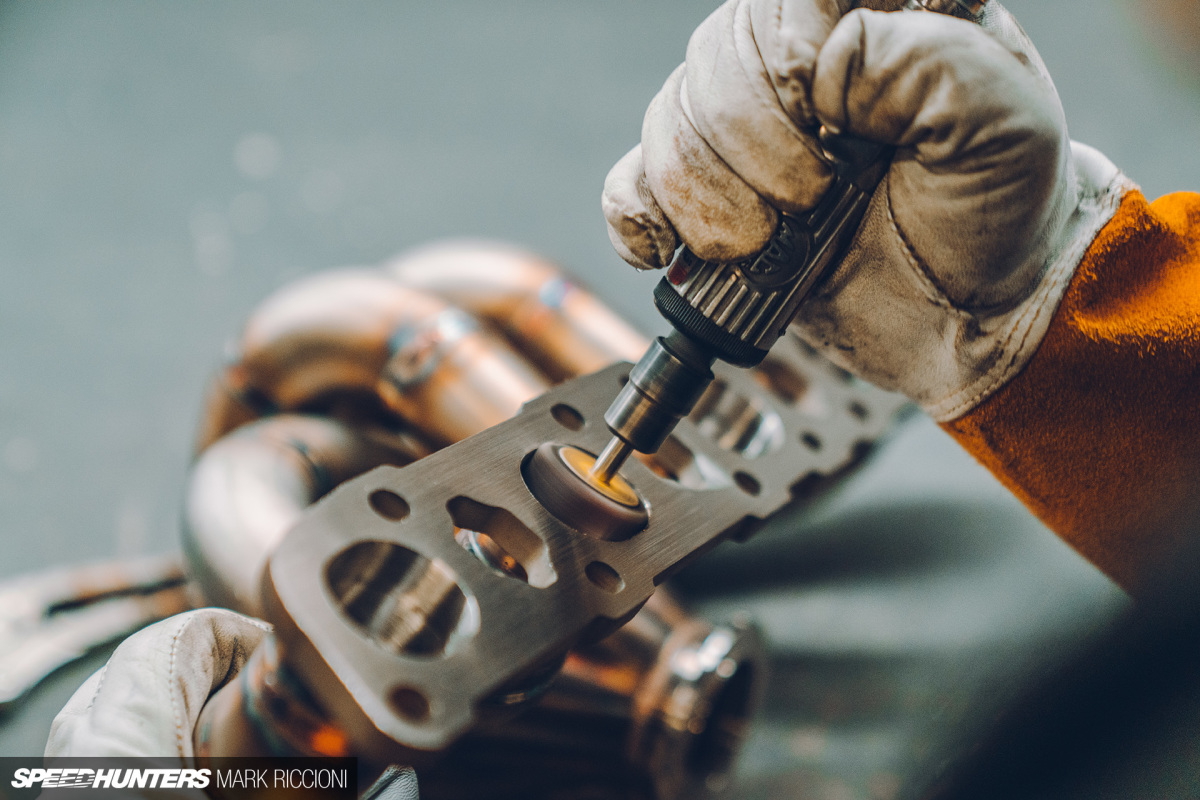
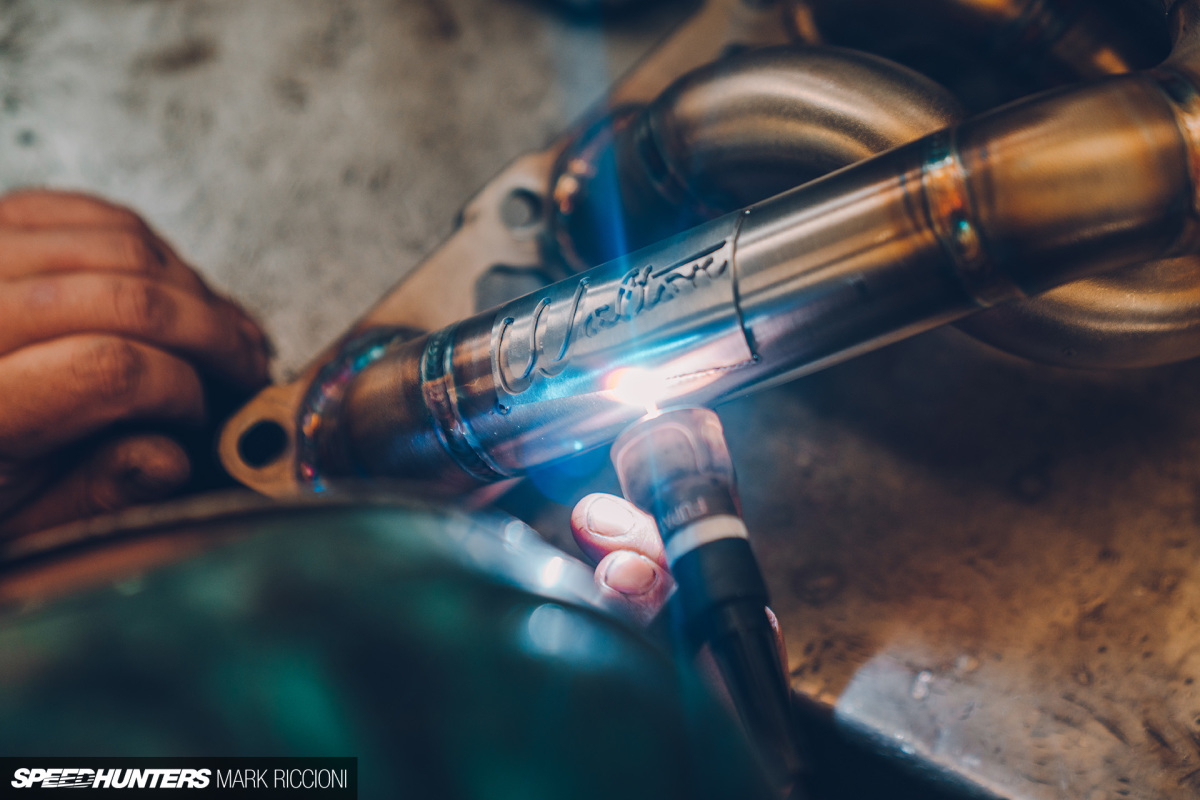
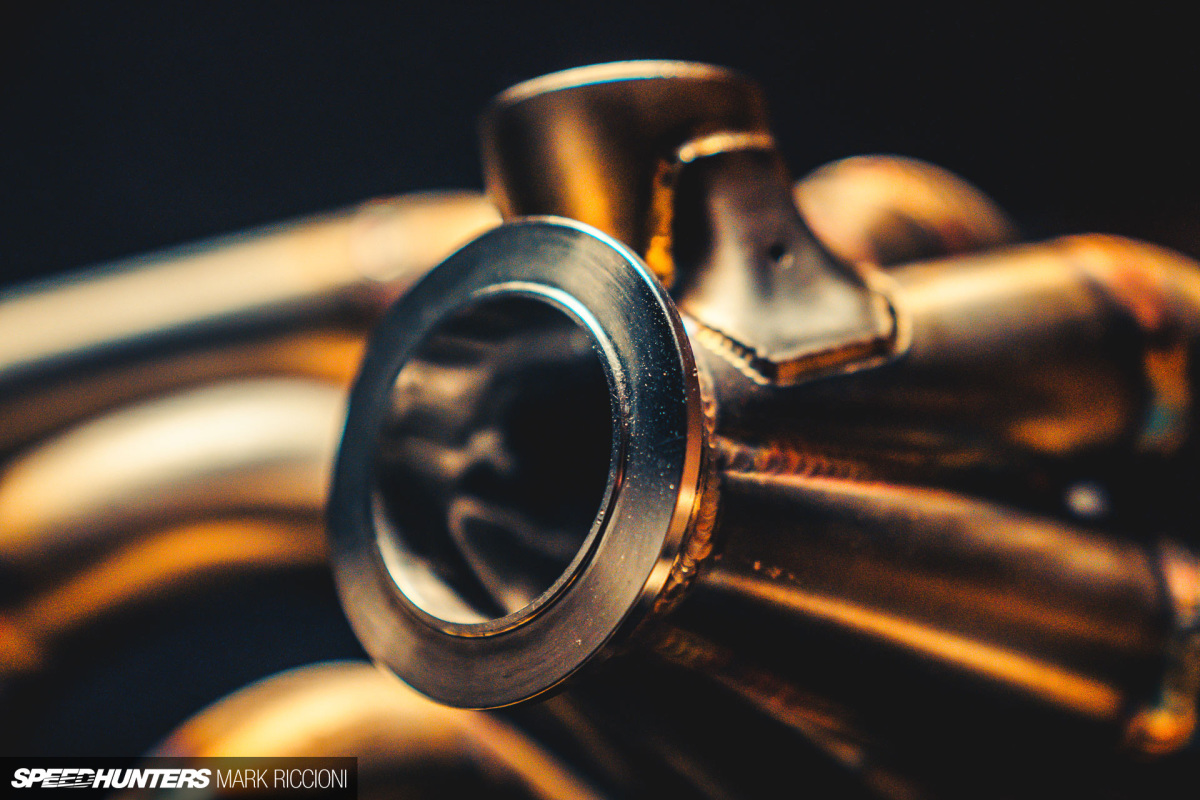
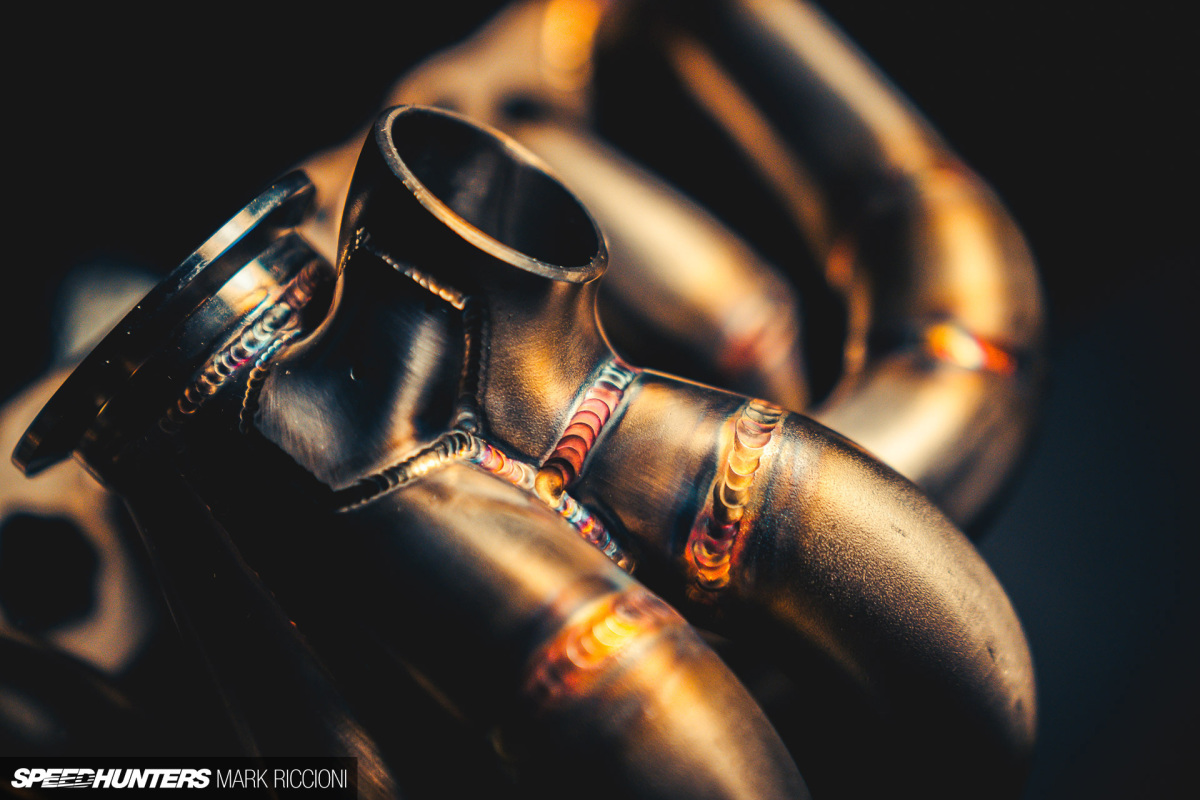





do they also do positive displacement supercharger manifolds?
Not as a ready to ship product I am afraid, but we do a lot of custom/1 off parts if you can get a car to us in the UK
Superb manifold article, Mark. in short, these manifolds are built by professionals and used by professionals.
When applied to ebay's "bang for buck" turbo manifolds, they sometimes mean 'wait for explosion to happen, they pay more for repair'.
Just a question, is 3D metal printing the next new thing in building manifold?
Some plastics - nylon, for example - can be used in desktop printers to make low-heat, non-structural car parts.
Learn CAD, boys and girls.
It's quite extensively used at the high end of our industry (F1 WRC etc) when working in Inconel, but only for parts at this stage rather than a full manifold. Good ol fashion grinder and welder will have its place for a while yet.
If u can afford a metal 3D printer, man those are insane. Flow will be even better but sadly welders will get less jobs if printers get even more affordable.
hp now offers a service where they will 3d print (binder jetting) a metal part for you, at a cost of course.
the machines are running anywhere from 250k-500k and up. there is a list and we aren't on it.
The problem with the parts manufactured by these machines is they are not very dense unless additional material is added.
the added benefit once the technology advances is they are capable of producing complex geometry that simply wouldn't be possible to create via human welding.
source- 2nd year cad student.
_Work in high end Exhaust manufacturing_
3D printing is the way the industry is currently going, especially for the top end of motorsport. The printing is also getting far more affordable, especially for the technical sections such as collectors which take many labour hours to manufacture.
3D printers are currently too small to make one complete exhaust section so the risk right now of removing jobs from the sector isn't too big of a threat, just the volume of what can be made is increasing. I have seen however wastegates being made from literally 4 pieces. Turbo to tail.
A quick note too, the welding on the attached article is pritty shoddy, but would be fine for a back street builder and from experience the "cheap ebay" stuff you get tends to be fine for day to day use. It's things like hangers and material quality which tend to have a bigger influence on the life of a part.
@ZZ3, As Mark mentioned in the article, its the insides of the collectors, etc that is one of the largest the issue with "cheap eBay" manifolds, we have seen so many turbos damaged from the fragments that break off the insides of the collectors, along with any loose materials inside the primary pipes.
As for the welding standard, it's good enough to pass the QC of a multiple championship-winning F1 team
That's not very encouraging then is it :p Perhaps Williams?
*drops the mic
Those renovation shows drive me nuts. How can it take seven months and eighty thousand dollars to rebuild a bathroom?
Though I get the idea of replacing "unique fixer-upper opportunity" with "R-34."
A proper Japanese turbo kit for one of those costs about $80,000 too, right?
Your welding skills are on point bro!
My step-pappy worked as a mig welder in a factory, so I definitely know a thing or two about welding and those welds are definitely crappy. You can plainly see too much heat, as the discoloration in the aluminum tubing shows. Probably have been better to stick weld it, but I think you have to get special rods for that. Nickel rods I think. On a noz car that wouldn’t last maybe a few passes before the welds blow. A buddy of mine has had it happen, twice. Might last a little longer on a street car though. Lol @ Walton motorsports, fine looking fabrication. I see you are using a Themalarc, do you use the pulse any, or is that up to the preference of the fabricator? I have never been happy with setting up a thermalarc to pulse right, but I love it otherwise.Cheers!
Always hate it when my aluminium exhaust manifold is ruined by discoloured welds
From the colour POV, this is somewhat over-emphasized by the colour grading on the photos. In reality it's nowhere near as dramatic.
Great write up on the development of your custom manifold from design to finish product! it is very rare we are customers get to see the build process in high quality and commentary from the professional. Two questions: is there a reason why you decided on single-scroll v-band vs twin scroll v-band? Second, what were the factors to replace the Full-Race manifold with the Walton Motorsport manifold on the Papadakis Racing GR Supra?
Cheers Bran! It definitely gives you an extra appreciation of the time/cost that goes into 'em, which i'm also guilty of doing.
With regards to the single V-Band fitting, the simple answer was down to what was available with the exhaust housing of the Xona XR10568 turbo i've opted for. I wanted the biggest AR available and (at the time, i'm not sure if it's changed) this was only available in either a single V-band fitting or single/twin scroll T flanges.
It's my first time using this brand (as well as Ron @ RK Tuning) but it's been mighty mighty impressive during initial mapping up to 1 bar, we're still in the process of finishing the mapping but really looking forward to putting that update together.
You do realize that Fredric races in another drift series besides Formula D, right? You know, like, for another team? At the same time as racing for Papadakis...
Honest mistake, I misread... there is no 2JZ in the papadakis racing Supra... so relax
Nice Xona. Looking forward to that article when it comes out.
This was excellent, thank you Mark.
On 3D printing, C.R.E.A.M. On a street car, and that Mr. Riccioni isn't on the Forbes 1000 list, this welded beauty might be the tippy top. Sure a one-piece iconel piece that's 3D printed exactly for the build will flow better, last longer, weigh (much) less, and etc, but the car isn't going to win trophies outside of car shows/meets and our hearts (if you even give a damn about GTR's, the 90's, or let alone Nissan). Sure, he could have bought an e46 M3 CSL or M Coupe with all the same goodies and have the same thing, or a supra, yet reality is this build is spot on. In the age where the new hummer TRUCK will smoke it all day in the dirt median next to the drag strip driven by "some rando", these handmade, organic details, sounds, and experiences are the true soul of cars like these no doubt.
Fantastic craftsmanship
I love these 'Project Thirty Four' articles haha. Always a good read & a good laugh. We've all been there multiple times. I had 2 BNR34's in the garage at one time, neither of them could move lol. Good times!
Get them to do the whole exhaust. What grit/brand is that neon green sander belt would so cheer me up on a grey day. Dont leave the turbo in too long just plan an early rebuild, will you add turbo speed sensor?
It's around a 38grit. They are custom made to fit that machine and only last a few manifolds. We also have to keep onto of the backplate to ensure that does not wear.
Very insightful mark, Thanks for producing this feature.
That oval to round stubb transition had me racking my brain for about 10 minutes. Very clever, how is that transition achieved ?
que hermoso trabajo!!!!
As mentioned, because it wasn't sold here, nobody really knows what it is. There's only a handful of them imported here, and I've never seen another in the wild which suits me perfectly.jobztip.com